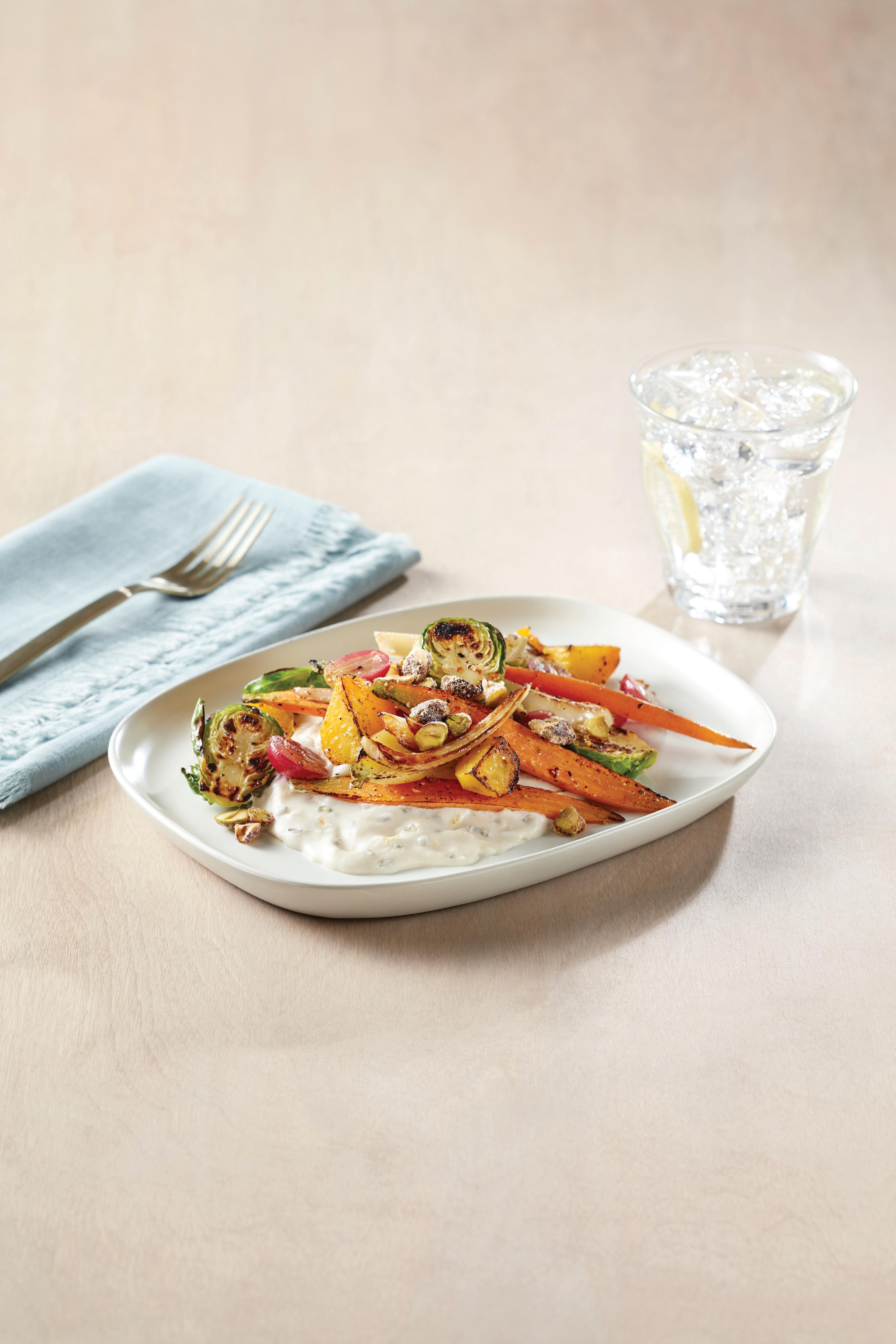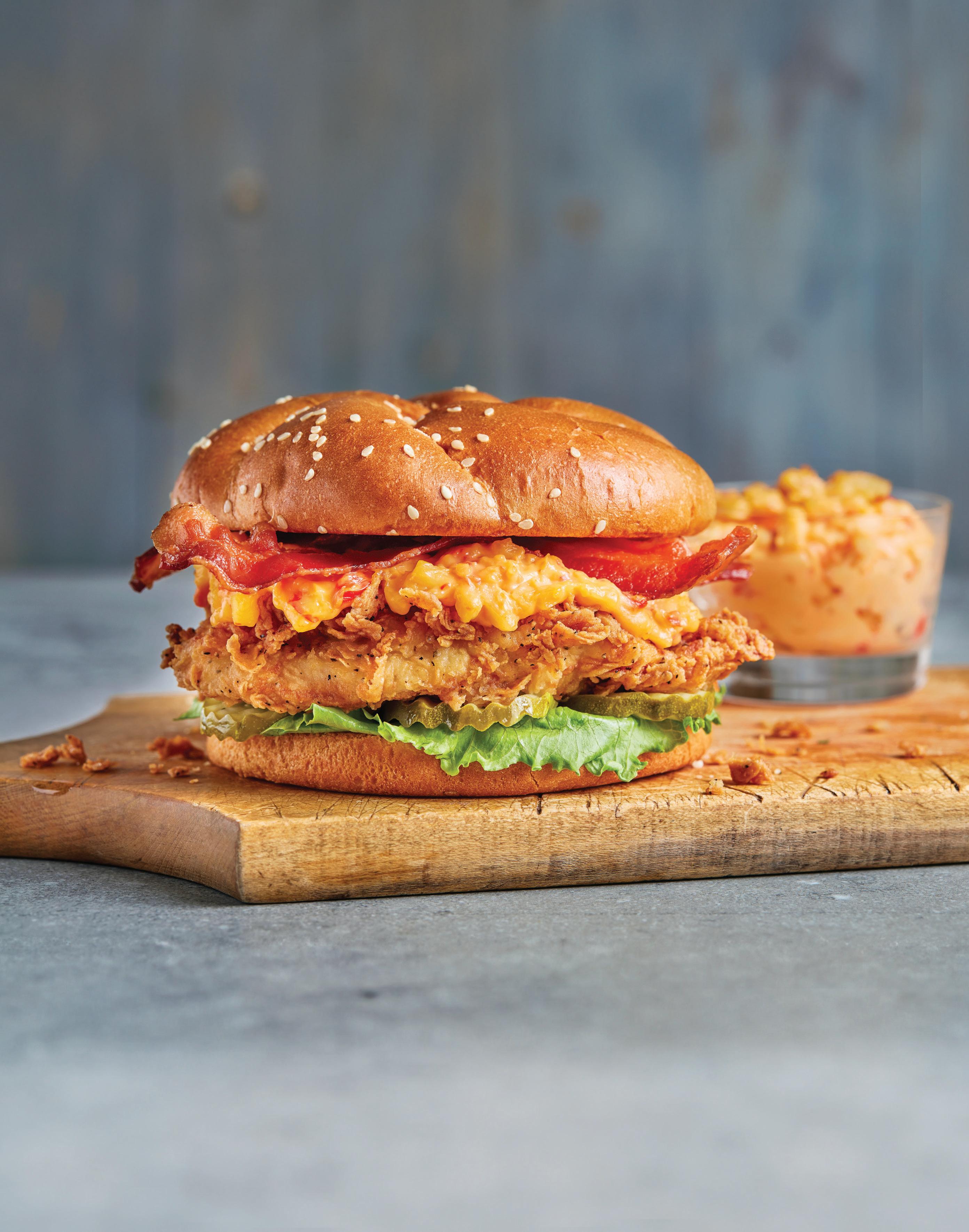ESSENTIAL DELIVERY TECH
STEAKHOUSES EMBRACE

ESSENTIAL DELIVERY TECH
STEAKHOUSES EMBRACE
HOW CEO KELLI VALADE IS RENEWING RELEVANCE AT THE 1,600-UNIT GIANT


SPOTLIGHTING CHICAGO’S ‘BREAKFAST
QUEEN’ INA PINKNEY
NEXT-GEN SOMMELIERS
LOS DOS POTRILLOS
THE UNVEILING THE TOP FULL-SERVICE TITANS IN THE U.S.
Our Bavarian Pretzel Bites are on track to be one of the most profitable products for menus everywhere. A delightful taste, these bites have the versatility to fit on any menu and be served in every daypart. Oh, and they’re good at making customers smile.

DENNY’S OFFPREMISES BUSINESS REPRESENTS ABOUT 22 PERCENT OF THE CHAIN’S SALES, INCLUDING ITS FOUR VIRTUAL BRANDS.
CEO Kelli Valade is renewing relevance at the 70-year-old breakfast giant by getting back to 24/7 operations and implementing new tech and menu innovation, elevating the nearly 1,600-unit diner chain to new heights.





Our new report highlights the powerhouse brands making legendary status in restaurant chain history. ough varied by cuisine type, these full-service restaurants all showcase recent growth.

13 Chicago’s 80-Year-Old ‘Breakfast Queen’
Ina Pinkney built a breakfast empire in the Windy City. Now, she’s recounting the lessons learned along the way.
Steakhouses are seeing a signicant uptick in demand for grass-fed cuts and are innovating around menus accordingly, including at Gibsons Restaurant Group and Jacobs & Co. Steakhouse.


In-house hospitality education pays o for up-and-coming sommeliers and sales, say leaders at Gracious Hospitality, Undercote, and more.

This year’s James Beard ‘Outstanding Chef’ Award winner Rob Rubba is championing a hyper-seasonal and sustainable approach at Oyster Oyster, his Washington, DCbased restaurant.
Playing background music has proven to create a positive environment for restaurant guests, and can even impact purchasing decisions. Here are five of the top songs that enhance dining atmospheres, according to customers.
ON THE RISE By 2028, Luis and Daniel Ramirez want to expand Los Dos Portrillos to 12 locations in Colorado, with a mixture of full-service and fast-casual establishments.

YOUR TAKE Operators need to ensure operational costs don’t erode the broader margin, with profitability in the delivery channel becoming more difficult to achieve. Here’s a guide on how to choose from the myriad of delivery technology options.
Chef Michael Hanna spent years honing his culinary skills in kitchens across Nashville before launching St. Vito Focacceria as a pop-up in 2020, which opened its first brick-and-mortar in May.

EDITORIAL
EDITORIAL DIRECTOR Danny Klein dklein@wtwhmedia.com
FSR EDITOR Callie Evergreen cevergreen@wtwhmedia.com
QSR EDITOR Ben Coley bcoley@wtwhmedia.com
ASSOCIATE EDITOR Sam Danley sdanley@wtwhmedia.com
BRANDED CONTENT STUDIO

DIRECTOR OF THE BRANDED CONTENT STUDIO, FOOD AND HOSPITALITY Peggy Carouthers pcarouthers@wtwhmedia.com
BRANDED CONTENT
ASSOCIATE EDITOR Charlie Pogacar cpogacar@wtwhmedia.com
BRANDED CONTENT ASSOCIATE EDITOR Kara Phelps kphelps@wtwhmedia.com
DESIGN
ART DIRECTOR Erica Naftolowitz enaftolowitz@wtwhmedia.com
LinkedIn.com/company/ FSR-magazine Instagram.com/FSRmagazine Facebook.com/FSRmag Twitter.com/FSRmag
2023 NATIONAL GOLD AWARDS: FRONT COVER (PHOTO), BEST USE OF COLOR NATIONAL SILVER AWARD: BEST USE OF TYPOGRAPHY
2016 MAGAZINE OF THE YEAR TOP 10 AWARD
2015 MAGAZINE OF THE YEAR
FOLIO: Eddie Awards
2022 BEST FULL ISSUE HOSPITALITY
2022 BEST SPONSORED CONTENT
2021 BEST PROFILE FEATURE
2017 BEST FULL ISSUE FOOD & BEVERAGE
SALES & BUSINESS DEVELOPMENT
GROUP PUBLISHER Greg Sanders gsanders@wtwhmedia.com
NATIONAL SALES DIRECTOR Eugene Drezner 919-945-0705 edrezner@wtwhmedia.com
NATIONAL SALES MANAGER
Amber Dobsovic 919-945-0712 adobsovic@wtwhmedia.com
NATIONAL SALES MANAGER John Krueger 919-945-0728 jkrueger@wtwhmedia.com
NATIONAL SALES MANAGER
Edward Richards 919-945-0714 erichards@wtwhmedia.com
CUSTOMER SERVICE REPRESENTATIVE
Tracy Doubts 919-945-0704 tdoubts@wtwhmedia.com
CUSTOMER SERVICE REPRESENTATIVE
Mitch Avery 919-945-0722 mavery@wtwhmedia.com
ADMINISTRATION
919-945-0704 www.fsrmagazine.com/subscribe
FSR is provided without charge upon request to individuals residing in the U.S. who meet subscription criteria as set forth by the publisher.
REPRINTS
THE YGS GROUP 800-290-5460 fax: 717-825-2150 fsrmagazine@theygsgroup.com
Sponsored content in this magazine is provided to the represented company for a fee. Such content is written to be informational and nonpromotional. Comments welcomed at sponsoredcontent@ fsrmagazine.com.
FOUNDER
Webb C. Howell
FSR is a registered trademark of WTWH Media, LLC. FSR is copyright © 2022 WTWH Media, LLC. All rights reserved. The opinions of columnists are their own. Publication of their writing does not imply endorsement by WTWH Media, LLC. Subscriptions 919-945-0704. www.fsrmagazine.com/subscribe. FSR is provided without charge upon request to individuals residing in the U.S. meeting subscription criteria as set forth by the publisher. AAM member. All rights reserved. No part of this magazine may be reproduced in any fashion without the express written consent of WTWH Media, LLC. FSR (ISSN 2325-2154) is published monthly by WTWH Media, LLC, 1111 Superior Avenue Suite 2600, Cleveland, OH 44114. Periodicals postage paid at Cleveland, OH and at additional mailing offices.
POSTMASTER: Send address changes to FSR, 101 Europa Drive, Suite 150, Chapel Hill, NC 27517-2380.
2013 BEST DESIGN, NEW MAGAZINE
2013 BEST FULL ISSUE, FOOD SERVICE/HOTEL
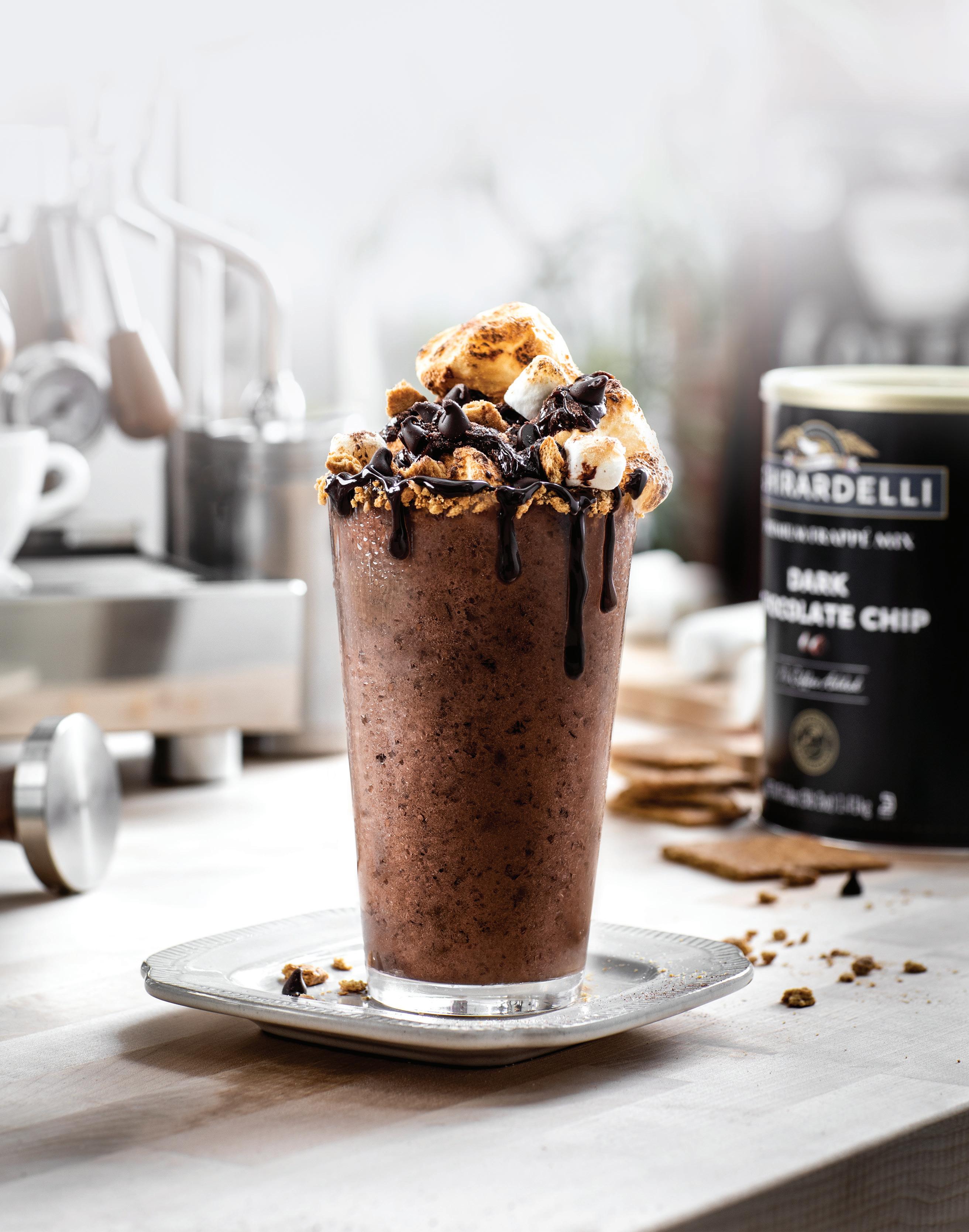


FSRMAGAZINE.COM THE MOST POPULAR STORIES ON OUR WEBSITE, OR WHAT YOUR PEERS ARE READING
After hinting to do so several months ago, FAT Brands will take Twin Peaks public and use the proceeds from the transaction to help pay off debt.
FSRmagazine.com/Twin-Peaks-GoesPublic

The chain’s new rewards program cuts through the clutter, both from a tech and messaging standpoint. FSRmagazine.com/TGI-Fridays-Loyalty
e concept believes a combination of organic revenue strategies, unit growth, and cost management will lead to $1 billion in adjusted EBITDA. FSRmagazine.com/Dave-Busters-Domination
The casual-dining concept with no chefs in the kitchen filed to raise up to $25 million in an IPO, and believes it has room for more than 250 stores in the U.S.
FSRmagazine.com/Gen-Korean-BBQPublic
PLUS FREE SUBSCRIPTIONS / HEALTHY EATING / LEADER PERSPECTIVES / RESEARCH REPORTS / WEBINARS
A solution has produced a 70-plus percent hiring success rate.
SPONSORED BY SPROCKETS
The bite-sized potato product has fast become a hit.
SPONSORED BY MCCAIN FOODS

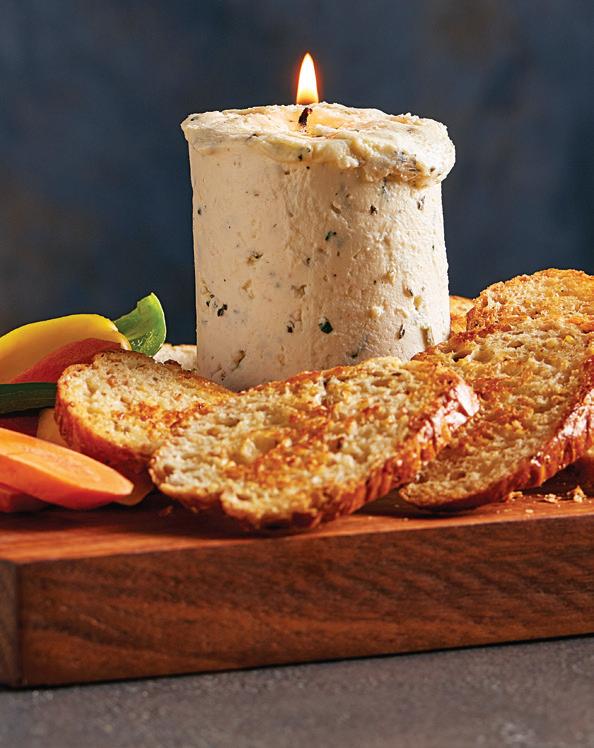
Why Operators and Chefs are turning to this solution.
SPONSORED BY AJINOMOTO FOODS NORTH AMERICA
The wide portfolio of products inspiring social media trends and innovation.
SPONSORED BY BEL BRANDS USA
The brand delivers bold flavor despite ongoing industry challenges.
SPONSORED BY SUPHERB FARMS





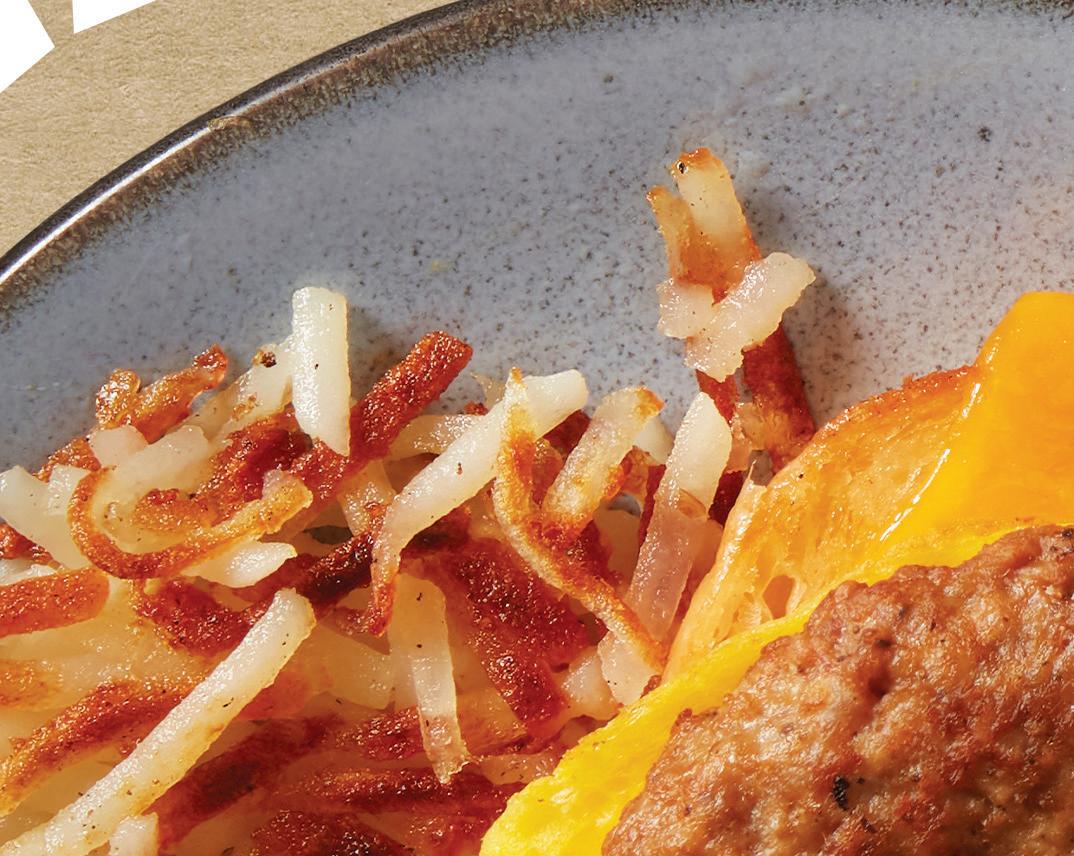




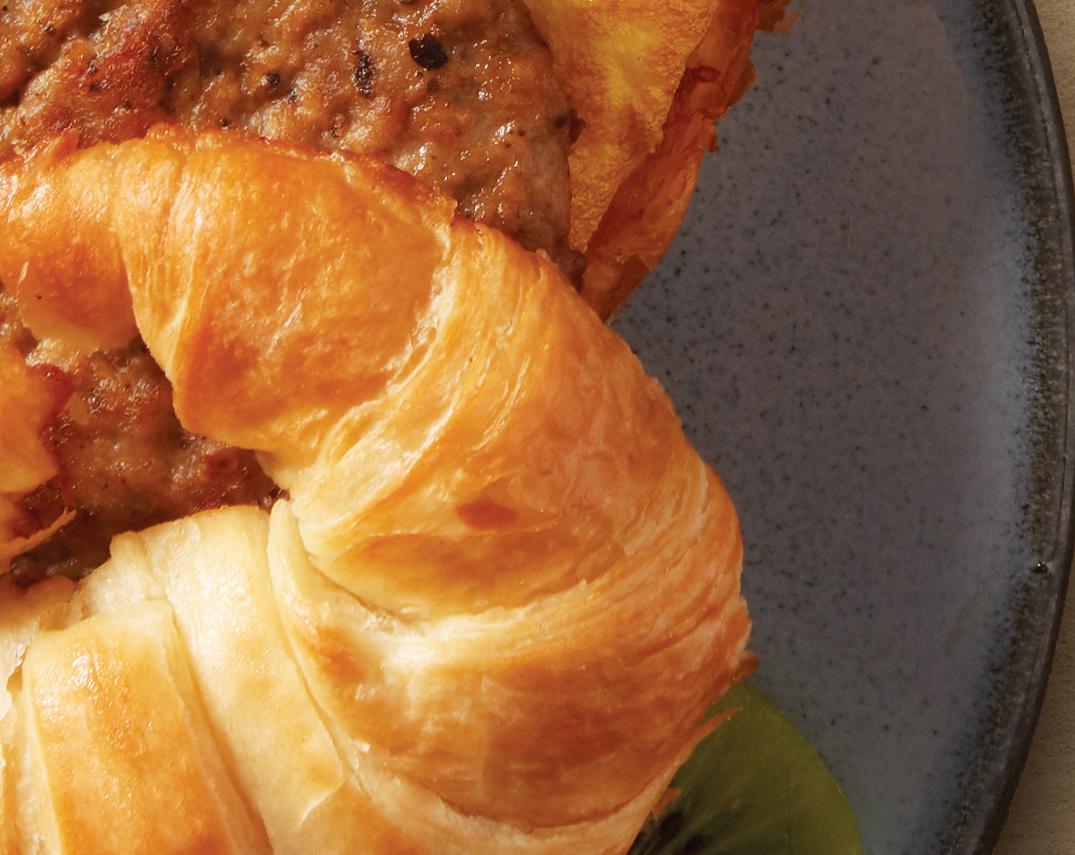











YOU DON’T ALWAYS GET IT RIGHT THE FIRST TIME. I, for example, chose to major in biology when I rst got to college. Science fascinated me, but I soon realized I wanted something more hands-on, so a semester later, I tried out nursing. I lasted in anatomy class for about two weeks before deciding it wasn’t for me. From there, I basically spun a wheel of di erent majors and landed on communications, then philosophy, and probably two others until I took my rst journalism reporting class—and nally, something clicked. It felt like my whole life had been leading up to that decision, pointing me in the right direction. However, I believe those other classes and majors I tried ended up making me a better, more well-rounded journalist. ere’s always a lesson to be found in what some people would consider mistakes or failures. I think Chicago’s ‘Breakfast Queen’ Ina Pinkney would agree with me; she had 21 jobs throughout her career, and was red from 19 of them. “And what I learned is that every job had something that I wanted to know,” she says. Turn to PAGE 13 to read her inspiring and wildly entertaining story (seriously, I hope I’m that spunky at 80 years old). is month’s issue contains a lot of teachable moments and growth stories. Restaurants like COTE Korean Steakhouse and others across the country are bringing no-cost, wine-intensive curriculums in-house to ripen the next generation of sommeliers (PAGE 25). Consumers and steakhouse operators alike are discovering the quality and value of grass-fed beef (PAGE 18).


And Denny’s CEO, Kelli Valade, took it upon herself to learn the ins and outs of nance, development, real estate, and more when she was promoted to the rst female brand president of Chili’s Grill & Bar in 2016, as well as Brinker’s executive vice president (PAGE 31).

August’s issue also features the full-service giants with massive growth stories in our new report, e FSR 30, which we teamed up with data partner Circana to compile (PAGE 36). Another brand on the rise, albeit at a smaller scale, is Los Dos Potrillos—a family-run Mexican restaurant seeking to expand across Colorado with a mixture of full-service and fastcasual stores (PAGE 49). Learn how to choose from the myriad of delivery technology options available on PAGE 51, and discover how Chef Michael Hanna is bringing an ancient style of pizza to Nashville on PAGE 54. Finally, let this year’s James Beard ‘Outstanding Chef’ Award winner Rob Rubba expand your mind with out-of-the-box ideas on how to make this industry more sustainable (PAGE 9).
As long as you keep turning the page, you’ll keep nding more lessons and new ways to engage with an ever-changing employee and customer base. Let’s dig in.
 Callie Evergreen EDITOR
Callie Evergreen EDITOR













This month’s cover of Kelli Valade was shot for Denny’s by Kathy Tran, an accomplished photographer, photojournalist, and multimedia business owner who hails from Dallas, Texas. While Tran’s expertise lies in capturing captivating visuals—including chefs, lifestyle, food, portraits, street styles, and more—her true passion lies in celebrating the beauty of life itself, always seeking out new slices of life to experience. To learn more about her, visit www.kathy-tran.com, or follow her on Facebook or Instagram at @kathytranx.
Create a delicious Sunrise Salsa featuring ¡Sabor! by Texas Pete® Mexican-Style Hot Sauce for the perfect sweet heat addition to any breakfast, lunch, or dinner menu item. It’s the perfect garnish for meat and fish dishes or serve as a starter!



















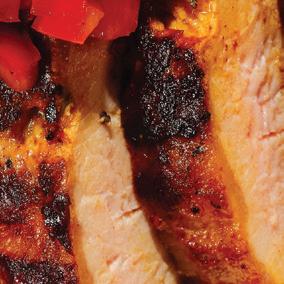










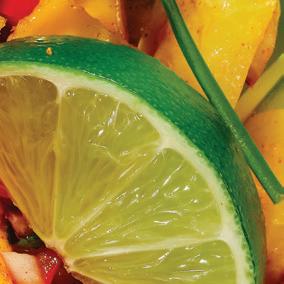








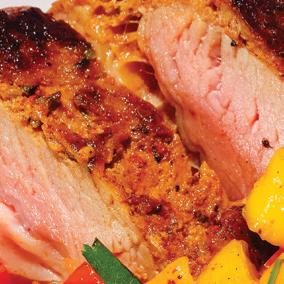














Scan the QR code below or visit TexasPeteFoodservice.com/SimpleAs to get the full recipe and more ways to Sauce Like You Mean It® with Texas Pete.®











































When you welcome American Express® Cards, you have access to benefits, services and programs to help your business, including:
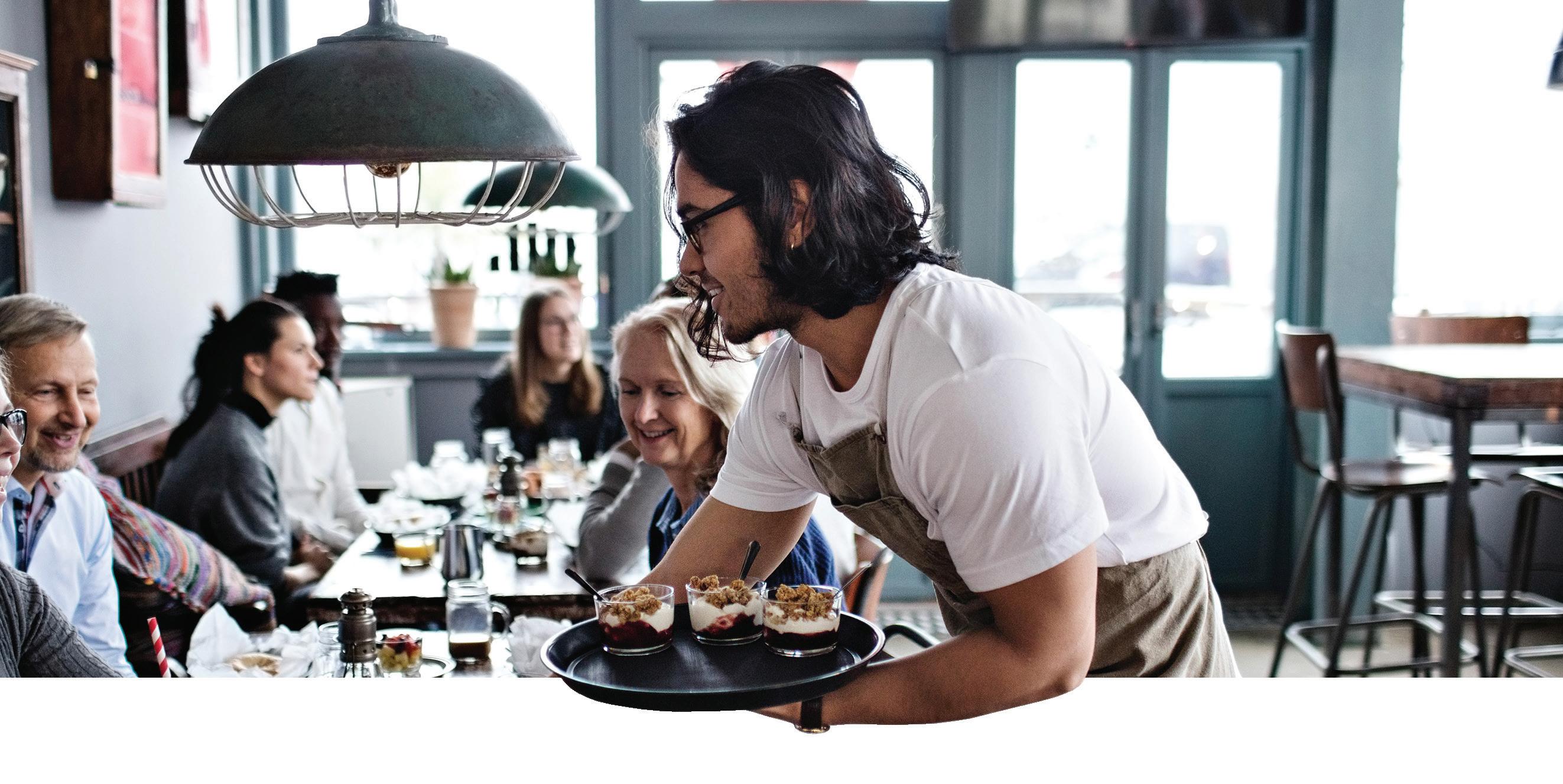
• Curated offers & discounts to help you get more out of your business.
• Solutions & tips to help attract new customers.
• Order free signs for your business that highlight inclusivity and community: AmericanExpress.com/signage/artistseries
99% CARD ACCEPTANCE
American Express can be accepted at 99% of places in the US that accept credit cards. 1
1. Based on the Feb 2023 Nilson Report.
3X HIGHER SPEND
In 2022, annual spend of American Express® Card Members was, on average, 3X that of non-Card Members. 2
65% HIGHER TRANSACTION SIZE
In 2022, the average transaction size of American Express Card Members was 65% higher than that of non-Card Members. 3
Scan the QR code for more information on resources for your business.

2. Nilson Report #1,235, February 2023. Spend per card derived from U.S. year-end purchase volume divided by year-end cards in force (CIF), not from individual consumer-level data. CIF represents the number of cards issued and outstanding with cardholders. Average Non-American Express spend per card includes Visa, MasterCard and Discover credit and charge card card volume and CIF and excludes debit and prepaid volume and CIF.
3. Nilson Report #1,235, February 2023. Transaction Size derived from U.S. year-end purchase volume divided by year-end purchase transactions, not from individual consumer-level data. Average Non-American Express transaction size includes Visa, MasterCard and Discover credit and charge cards and excludes debit and prepaid volume and transactions.
This year's James Beard ‘Outstanding Chef’ Award winner Rob Rubba is championing a hyperseasonal and sustainable approach at Oyster Oyster, his Washington, DC-based restaurant.
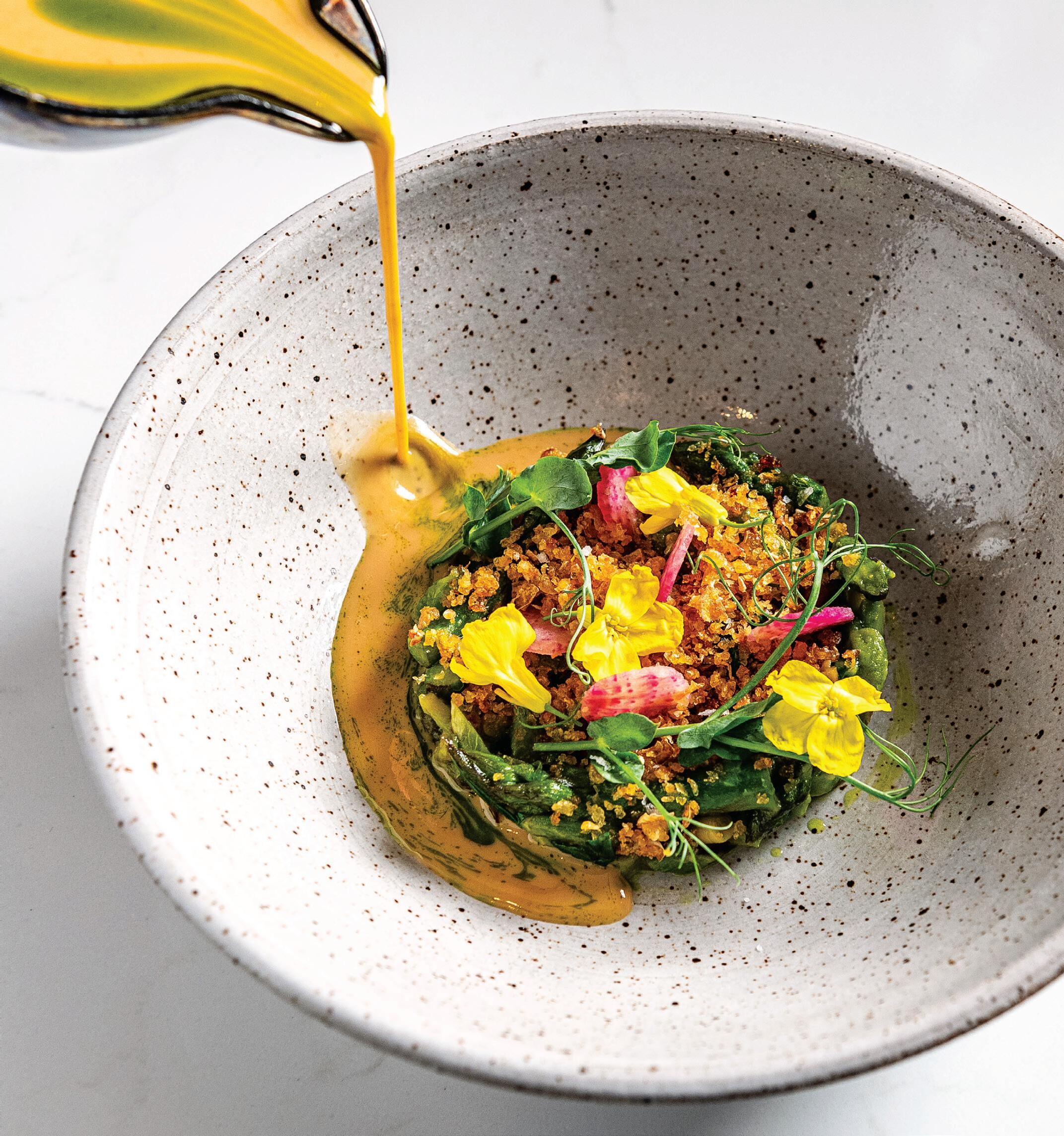
The fine dining world has arrived at a turning point, and Chef Rob Rubba is leading the charge for change.
AFTER TAKING A SUMMER JOB with his uncle and falling in love with the culinary world, Rob Rubba began chasing the best restaurants and traveled around the country. He worked for Gordon Ramsay at The London in New York to Michelin-starred restaurants in Las
Vegas, Chicago, Philadelphia, and back to New York. He then opened a restaurant called Hazel in Washington, DC which was globally inspired and meat heavy. “And I started to think about what my impact as a chef was,” Rubba told listeners on a recent episode of
REY LOPEZFSR ’s podcast, ‘The Restaurant Innovator.’
“A long career of thinking I was doing what was considered best, and finding there’s a lot of waste, that there’s a lot of mistreatment of both the employees in these restaurants as well as the folks who bring the food to you, and I realized the food I was cooking was far from sustainable, and I kind of had this existential thing if I even wanted to cook anymore.”
Rubba’s epiphany was two-fold: not only could he use his voice and public platform to push for positive change in the industry, but he could model a different way of doing things by building a sustainable restaurant from the ground up. “I might as well use what soapbox I do have to stand on and try to flip the script and push a better world for restaurants, whether that just be with the food when we talk sustainability or the way we ourselves operate,” he says.
His awakening led to opening Oyster Oyster in June 2021, a “dining experience for the future” that relies on seasonal and local produce for its tasting menu, and ingredients that are sourced from individuals who believe in organic and regenerative farming practices. In addition to minimizing food waste and carbon footprint, Rubba and his business partner, sommelier/restateur Max Kuller, believed they could make Oyster Oyster a one-of-a-kind experience in the Mid-Atlantic region.
A creative menu that tastes as good as it looks has the world paying attention—and taking notes. Oyster Oyster received a Michelin Star in 2022, and Rubba was awarded the big prize at the James Beard Award ceremony in June: ‘Outstanding Chef,’ an honor in a national category.
“We built something that was not only more sustainable for the environment, but for myself to not burn out in,” he adds. “We built something that was holistic for both myself and the staff, which is really beautiful.”
TO LEARN MORE, CHECK OUT ‘THE RESTAURANT INNOVATOR’ ON ALL PODCAST PLATFORMS.
PLAYING BACKGROUND MUSIC has proven to create positive and engaging experiences for customers at restaurants, and can even impact purchasing decisions. Consumers in the U.S. make more than 90 billion visits to businesses every year, and a whopping 79 PERCENT NOTICE THE MUSIC THAT IS BEING PLAYED, according to SOUNDTRACK YOUR BRAND, which gives restaurants, bars, and retail stores an all-in-one solution for streaming music. While the types of music played can vary based on the venue, it can also directly impact the bottom line. In a recent survey by TOUCHTUNES—which provides a modern jukebox experience for thousands of restaurants and venues—five of the top songs reported by customers to enhance the atmosphere include:

1 “ Tennessee Whiskey” CHRIS STAPLETON
2 “Blinding Lights” THE WEEKND
3 “I Wanna Dance with Somebody”
WHITNEY HOUSTON
4 “Save Me”
5
JELLY ROLL
“Fat Bottomed Girls” QUEEN
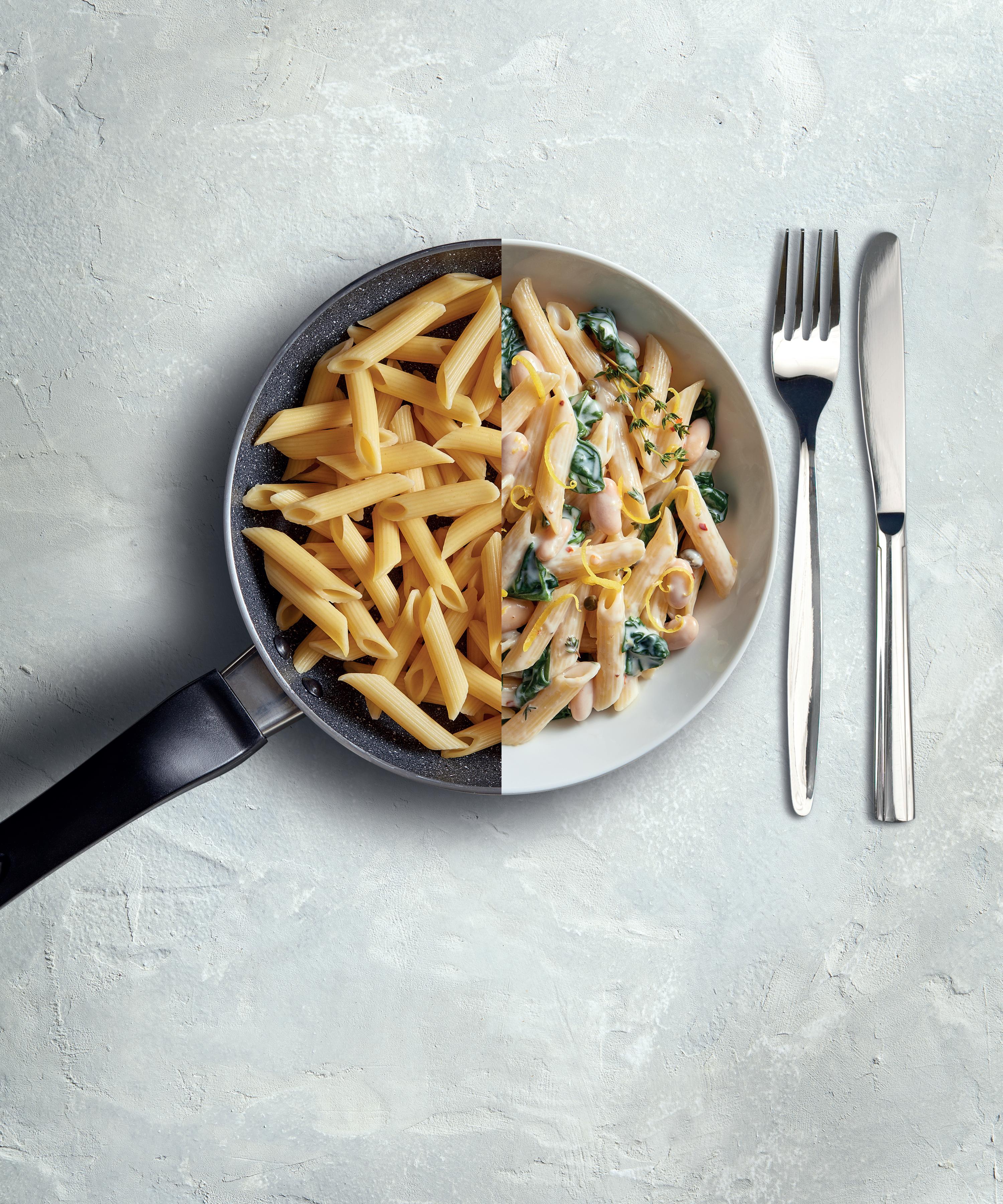









MENTIONED IN THIS SECTION GIBSONS RESTAURANT GROUP



At 80 years young, Ina Pinkney shares the secret ingredients to her success.
INA

TRANSFORMED FROM SOMEONE WHO HAD NEVER SEPARATED AN EGG WHITE BEFORE TO BUILDING A BREAKFAST EMPIRE IN THE WINDY CITY. AT 80 YEARS OLD, SHE’S NOW RECOUNTING THE LESSONS LEARNED ALONG THE WAY.
WHILE GROWING UP in the 1940s and early ‘50s, Ina Pinkney can’t recall seeing any examples of women in the media who were entrepreneurs or who owned their own businesses, so the thought of opening her own business didn’t cross her mind until the ‘80s. From serving as a manager at furniture and toy showrooms to working customer service at Revlon, Pinkney had 21 jobs in her life, and was fired from 19 of them. “Now, I was a hell of a good interview, wasn’t I?
I kept getting jobs. And what I learned is that every job had something that I wanted to know,” she says. “I got red a lot because I treated my job like that department or that area was my personal business, so my employees were happier and more productive. And we got things done, and I created a ex time when there was no such thing … I really understood the business world.”
“By the ninth ring, it didn’t bother me at all,” she quips. Pinkney recalls being red from one job on a cold Chicago day because she came in wearing pants under her dress to stay warm, and women weren’t allowed to wear pants at

most businesses at the time.
One day while getting ready to begin her 21st job as a manager of a plastics company, she saw an ad in a local newspaper for a balloon delivery service— and an idea sparked. “For your birthday, people send you balloons, they send you strippers, and they send you singing telegrams,” she says. “ is was 1980. But nobody sends you a cake? Isn’t that sort of wrong?” She pitched the idea of tuxedoed butlers delivering cakes to people with sparkler, plus parchment scrolls with birthday wishes and kind messages. “And everybody was going, ‘oh my god, what a great idea.’ And I went down to my apartment, it was a Saturday, and I wrote down all the things I thought I needed to do to make that happen.”
Soon enough, Pinkney’s phone was ringing with orders from people who had heard through wordof-mouth about her new butlercake-delivering service. “And I did

said yes. And I took down all the information. And then I thought, ‘oh my god, I need a cake,’” she recalls. At the time, most cakes were dry, layer cakes with “bad buttercream and I thought, ‘oh, I wouldn’t even eat one of those.’” So she decided to make one of Craig Claiborne’s recipes for a ourless chocolate cake she saw in e New York Times Magazine.
“Now here was the issue—I had never separated an egg. I had never beaten an egg white. And I had never melted chocolate. So I tried to make this cake and it was a disaster, so I went out and bought enough ingredients for three more cakes,” she admits. “And by the end of that third and fourth one, it was perfect. It was absolutely perfect. And I thought, well, I’ve just learned something. If you can read, you can bake.”
“I would follow a recipe and I would do what it said. Baking was so in my wheelhouse, because a tablespoon is a tablespoon,” Pinkney adds. “I’m baking at night, bringing the cakes to work, and these guys are showing up in their little tuxedos, they’re going o and delivering cakes, going everywhere.”
Pinkney got red from the plastics
BEST MUSIC TO BAKE TO: Today, I needed to get pumped up and was listening to “The Circle of Life” from “The Lion King” (Composed by Elton John, performed by Carmen Twillie)
GO-TO COFFEE ORDER: I’m a latte girl, day and night. At night, it’s decaf with whole milk and good froth.

WHAT YOU HAD FOR BREAKFAST TODAY:


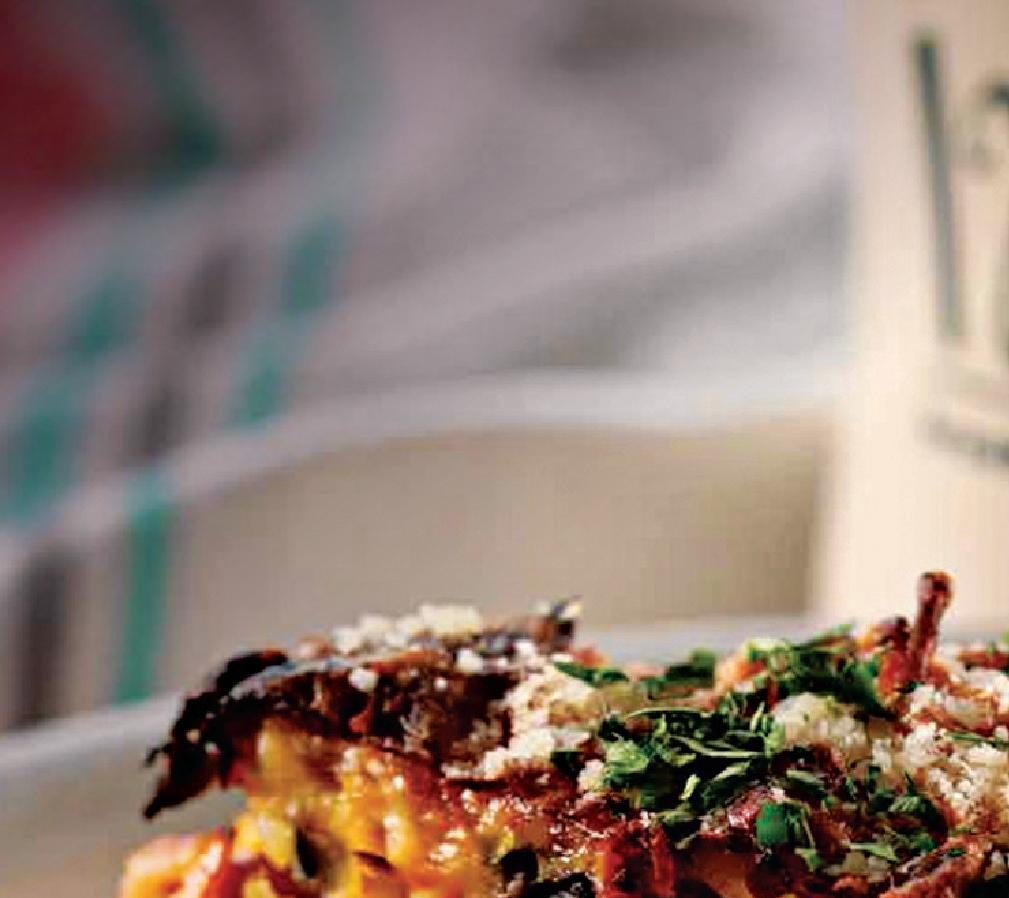
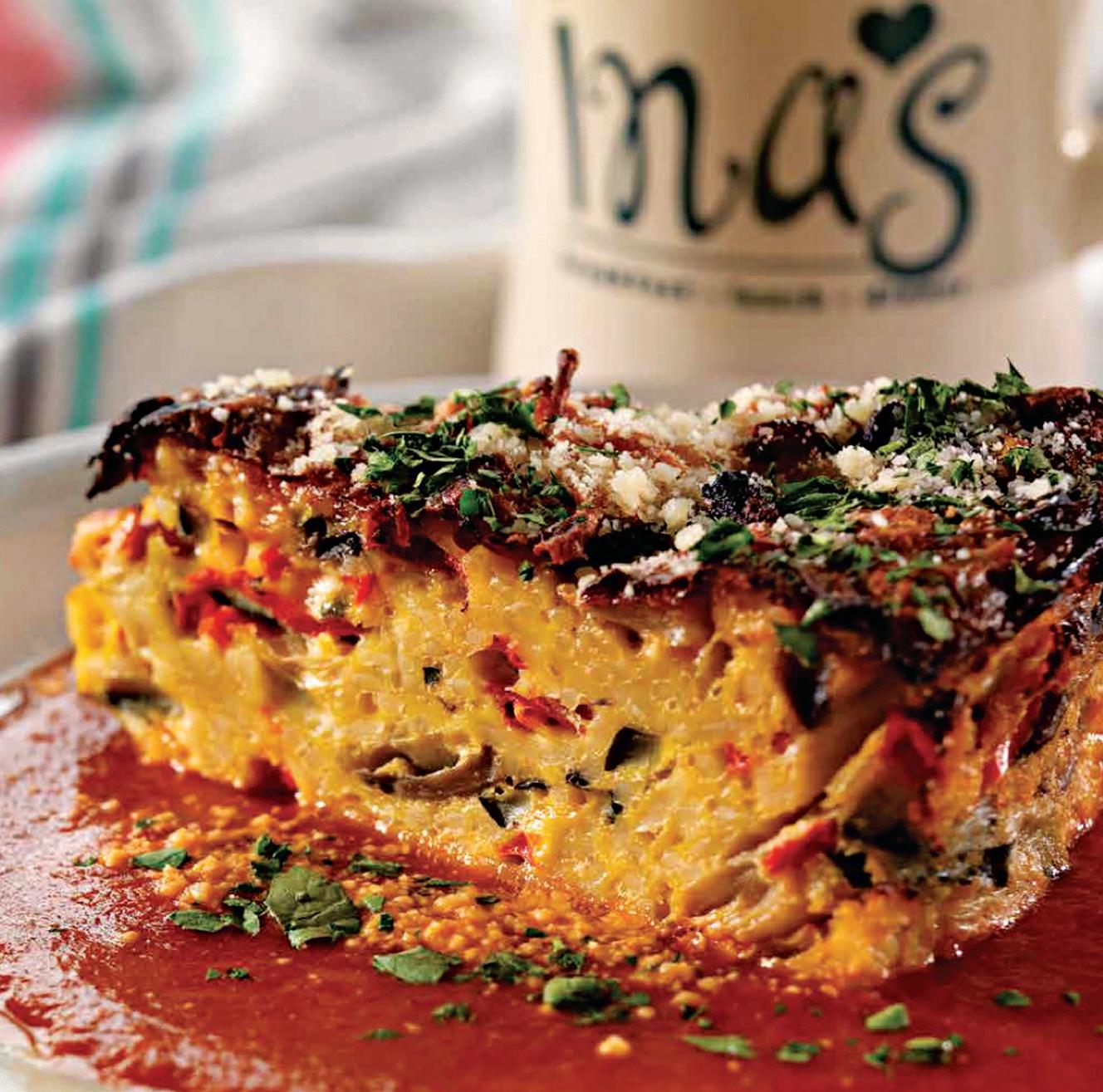
Amylu’s chicken sausages, and I like sunny-side-up eggs cooked in olive oil so that they frizzle at the edges.
FAVORITE RECIPE: Heavenly Hots


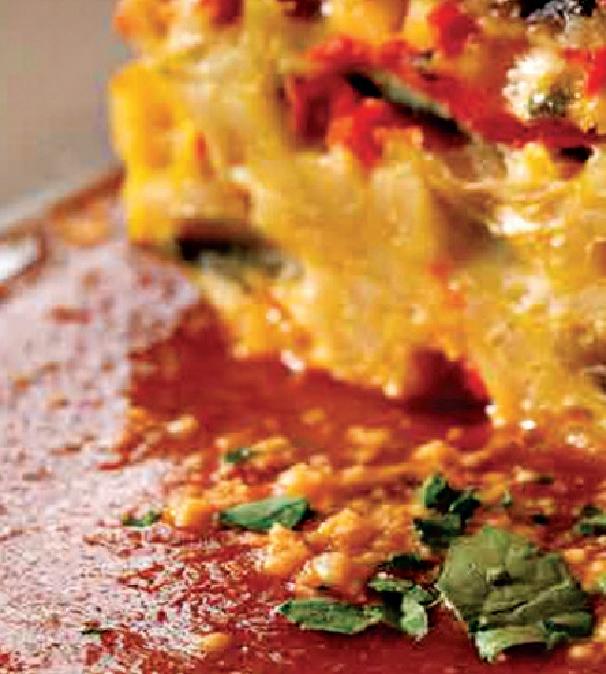


Pancakes that were on the menu, and people went crazy for them for 22 years. Ingredients: 4 large eggs, 2 cups sour cream, 1/4 cup cake flour, 2 tbsp. potato starch, 3 tbsp. Sugar, 1/2 tsp. baking soda, 1/2 tsp. salt, served with peach, raspberry, blueberry compote.
















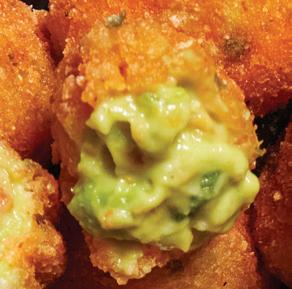

























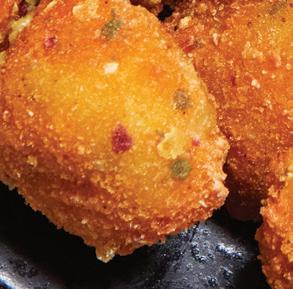



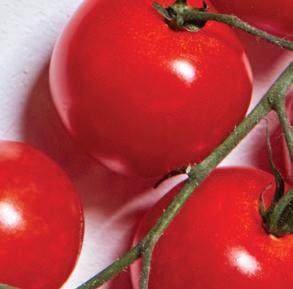






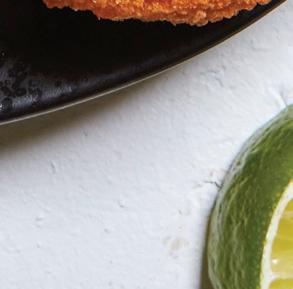
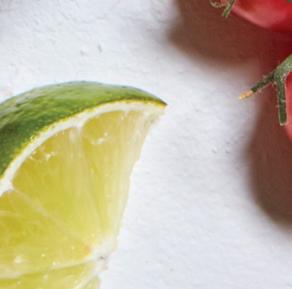


company and began baking fulltime at home, until she snapped up a storefront in the neighborhood and turned it into a licensed baking kitchen. She started a dessert catering business in 1980 when that kind of concept didn’t exist, she says. at business quickly evolved into a full-blown breakfast restaurant in 1991 after Pinkney realized the opportunity she had to create something different from the other options in town.



seats lled, thanks to people doing business and meeting before work instead of leaving at lunch. Most importantly, the quality of ingredients was top-notch— like freshly-baked whole grain bread with seeds twisted and baked together for her version of breaking bread (without the crumbs from a baguette), and freshly-cut soft butter, never wrapped in foil or served cold. “Everything had to be di erent and better than they had
restaurant career journey and the legacy she made in the Chicago food scene— which appeared in 48 film festivals. “Having [my life] documented is profound, and I’m very proud of how it came out,” she says. “It’s a little overwhelming. And I say a little; it’s more than that.”
On April 26 this year, Chicago Chefs Cook organized a birthday bash for Pinkney’s 80th trip around the sun, where more than 60 local chefs gathered “in the spirit of neighborly love to unite and celebrate an icon, the Breakfast Queen,” the event news release said. “But more importantly, the community will unite to celebrate Ina’s wish to lift up the next generation and ready themselves for the challenges of a changing world.”
Chefs in attendance included Top Chef Master Rick Bayless of Frontera Grill; James Beard Award-winning pastry chef Gale Gand, host of “SWEET DREAMS”—the rst ever dessert-only cooking show on e Food Network; and reality star Chef Fabio Viviani of Siena Tavern and Bar Siena. The star-studded event’s proceeds benefited Chicago’s Green City Market and nonpro t Pilot Light.
“Because it was the ‘80s, breakfast was thoughtless, co ee was insipid. Somebody was breaking eggs on a greasy griddle and scrambling them there. Everything was so bad,” she says. “Somewhere in the ninth year of eating the worst food on the planet, I said to [my husband at the time], ‘why can’t anybody make a really good breakfast?’”
Right then, Pinkney decided to open her own A.M. eatery “like no one has ever seen.” Her idea was to combine the best hotel dining rooms and old-school diners, and create a ne-dining breakfast restaurant with accessible food, but with the atmosphere of an upscale hotel with carpeting and no music.
Pinkney opened Ina’s Kitchen in 1991, which quickly became the premier breakfast spot in the Windy City. At 8 a.m. on Wednesdays, she had 110
ever had, and our signature,” she says. “I had a starting menu and I thought, ‘Okay, whatever doesn’t sell, I’ll change.’ e menu was exactly the same menu for 22 years. I added things, but I was right on.”


After 22 years in business, Pinkney closed Ina’s in 2013, but has continued sharing her love for food in various ways. In 2014, she self-published “Ina’s Kitchen: Memories and Recipes from the Breakfast Queen” in hardcover, and has sold thousands of copies with minimal bookstore distribution. She also became a regular columnist for Chicago Tribune until 2020, writing about everything from Chicago restaurant reviews and where to nd the best bagel to tips for getting breakfast delivered.
e next year in 2015, a 50-minute documentary was released called “Breakfast at Ina’s”—showcasing her inspiring








“ is is the part of the story where I look at you and go, I had no idea I would be relevant at age 80 and still be asked to do things,” Pinkney notes. “I went to work every day and did the right thing, and I think some owners don’t get it; they don’t come out of the kitchen, they don’t understand their presence matters.

ey don’t understand that they need to greet their employees like they greet their guests, because the employees are the rst people through the door. And you set the tone with them by greeting them.”
“Now, being a woman owner was very different than I’ve heard from other chefs,” she explains. “I always said they would never mistake my softness for weakness. Only once did I have to raise my voice, and that’s because I saw someone doing something dangerous.”
Pinkney’s advice to “old chefs” is to “really respect the new way of thinking about the younger chefs, about having time and sharing that time,” she adds.
“Now here was the issue—I had never separated an egg. I had never beaten an egg white. And I had never melted chocolate. So I tried to make this cake and it was a disaster.”












Filtrating your frying oil you save up to 50% on your frying oil expenses and enjoy a range of incredible with VITO. Say goodbye to time consuming manual filtrations and constant supervision. Our innovative system filters your entire fryer in just 4.5 minutes, ensuring superior food and oil quality






.


Experience positive impacts on both your and kitchen by embracing the .




wallet game-changing

to our growing community of over 50k satisfied customers worldwide





























THERE’S AN EVER-CHANGING landscape of beef available at Jacobs & Co. Steakhouse, where head chef Danny McCallum prints the menu daily. “I like to have the menu read like a wine list,” he says. “Do you prefer California Cab or Bordeaux? Angus from Kansas or from Scotland? It’s all about the terroir in these cases.”
Guests at the high-end Toronto restaurant can also choose from a variety of grass-fed steaks, including domestic beef sourced from local farms in Canada as
well as imported beef sourced from different regions around the world. McCallum notes he’s seen a significant uptick in demand for those grass-fed cuts, driven in large part by their health and sustainability halos.
Gibsons Restaurant Group has seen consistent growth in consumers craving grass-fed beef, too. Corporate executive chef Daniel Huebschmann cites The Boathouse as one example. Located in Orlando’s Disney World resort, the upscale steak and seafood concept

stands as one of the nation’s highestgrossing restaurants. It was moving a fair amount of 12-ounce grass-fed ribeye steaks when it launched the product in the months leading up to COVID19, and Huebschmann says the item has seen “exponential growth” coming out of the pandemic.
“If I had to compare January 2020 to January 2022, I’d say we were up around 40 percent,” he says. “This spring we saw our second-best month on that item, and it’s been available for about four years.”
“I like to have the menu read like a wine list. Do you prefer California Cab or Bordeaux? Angus from Kansas or from Scotland? It’s all about the terroir in these cases.” in
Grass-fed beef also resonates at Gibsons Italia, the company’s modern Italian steakhouse in Chicago, where the menu is designed to promote exploration. Guests are encouraged to share steaks with their table and compare the avors and textures associated with different types of beef.
Gibsons Restaurant Group rst got into the grass-fed beef game when Gibsons Italia was in the R&D stage. Huebschmann wanted to o er a more diverse selection of steaks beyond the grain-fed domestic prime the company was known for.



“We vetted out domestic cuts, and we vetted out Australian cuts. There really was no competition,” he says. “It would’ve been great to stay domestic on this, but when you’re talking about nding 100 percent grass-fed beef with all of the things people are looking for—free

range, no added hormones, no antibiotics—there’s no competing with Australia.”
It can be a challenge for chefs in the U.S. to source true grass-fed beef. Carrie Carter Balkcom, executive director of the American Grass-Fed Association, says some domestic beef products labeled as grass-fed may come from animals that were fed a combination of grass and grain or had limited access to pasture.
“ e problem is that the labeling laws are so lax that we’re not really sure if people are serving grass-fed or if they’re serving something they’re being told is grass-fed,” she says. “ e USDA allows meat that is brought in from o shore–which you have no clue how it was produced–to be labeled as grass-fed. It’s allowed to be labeled as a product of the U.S.A. if it’s repackaged here in any way.
at means chefs really have to stand up and say, ‘I want to know where this




comes from and I want to know exactly how it was raised.’”



Meat Standards Australia (msa), the country’s USDA-equivalent grading system, takes into account specific attributes associated with pasture-raised cattle to provide a reliable framework for verifying and predicting the quality of grass-fed beef. MSA also serves as a tool for producers to optimize their practices, which Huebschmann says has resulted in an overall better-tasting product.
“We found the Australian product tasted cleaner, and it didn’t leave that metallic aftertaste you get sometimes with grass-fed beef,” he says. “ at has to do with the environment and the quality of the grass that the animals consume.”
McCallum shares a similar sentiment, describing the Australian grass-fed beef as “mind bogglingly delicious for being 100 percent grass-fed.”
Jacobs & Co. also sources grass-fed beef from Argentina and from local farmers in Toronto. The full-spectrum approach creates opportunities to engage with guests and explain the di erences between the various grassfed options, as well as the di erences between grain-fed and grass-fed beef.
Grain-fed beef tends to have a milder avor with a more tender and buttery texture. Grass-fed typically is leaner and chewier with a more grassy, earthy, and gamier taste. McCallum says it often is the least expensive option, which means people frequently order it by default, even if they’re unfamiliar with what it means in terms of avor and texture.
“ ere’s a lot of explaining to guests that it isn’t necessarily your typical tender and juicy steak,” he says. “That’s something you lose when you’re going with a product that’s more natural. On the other hand, it has more of a bite to it. It has a very unique avor pro le. When you start getting really speci c about where it comes from and what it ate, then you start getting closer to a true representation of what grass-fed can be, which is equal if not sometimes better than grain-fed. A lot of people really enjoy it, so there’s certainly a lot of value in having it around.”
 GUESTS AT JACOBS & CO. CAN CHOOSE FROM A VARIETY OF GRASS-FED STEAKS, INCLUDING DOMESTIC AND IMPORTED OPTIONS.
GUESTS AT JACOBS & CO. CAN CHOOSE FROM A VARIETY OF GRASS-FED STEAKS, INCLUDING DOMESTIC AND IMPORTED OPTIONS.
As the conversion experts in second generation restaurant sites, you’ll shell out less on your buildout while dramatically shortening the time to start bringing in the clams.























*This figure represents the net sales achieved for calendar year 2022 at five (5) affiliate owned restaurants and ten (10) franchised restaurants. **This figure represents the average EBITDA achieved for calendar year 2022 as a percentage of consolidated net sales at the same five (5) affiliate owned restaurants and nine (9) of the ten (10) franchised restaurants. Each of the included restaurants were open for all of calendar year 2022. This information appears in Item 19 of our Franchise Disclosure Document (FDD). You should review our FDD for details about these results. Your results may differ. There is no assurance that you will do as well.


And why many top quick-service brands buy high-performance oils.
Many of the comforting foods served by restaurants have something in common: They are fried in oil. And yet, not all restaurants take frying oil as seriously as they should, says Mike Nestor, vice president of sales at Stratas Foods.
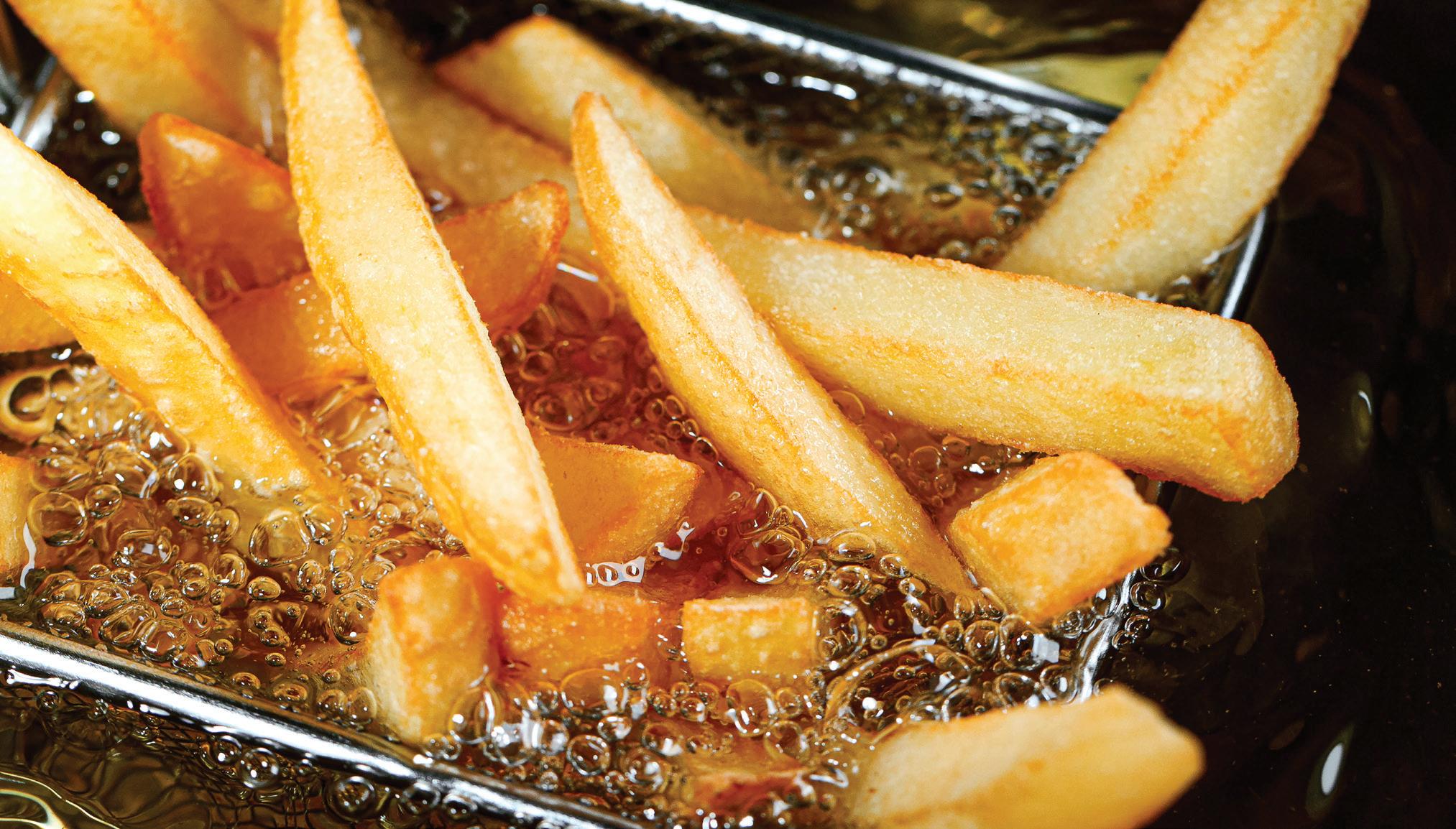
“The biggest mistake I see restaurants making is not treating their frying oil like a food item,” Nestor says. “You have to find the right oil for your food and not just buy a box of oil from whoever is selling it at whatever is cheapest. Operators wouldn’t do that with other food ingredients they source, and they shouldn’t be doing it with oil.”
Treating oil as a food item is something that many of the top quick-service brands already do, Nestor says. Because Stratas Foods services a large percentage of the top quick-service brands, Nestor knows that very few of them use a commodity oil in their deep fryers. Instead, the brands find that spending a little bit more on a high-performing oil will lead to less money wasted in the long run.
“I often tell people that fryer oil is a lot like buying tires for your car,” Nestor says. “Better tires perform better and last longer. You get more miles out of it. It’s the same as your oil—in the long run, it’s going to cost you less to invest in a high-performance oil.”
Nestor also recommends that chain restaurant brands of just about any size reach out to their supplier of choice for options to lock in long-term pricing. Drawing up a contract for high-performing oils can help restaurants avoid massive spikes in oil cost.
With operating costs at an all-time high, Nestor and his team are talking to an increasing number of restaurant operators who are looking to cut costs where they can. Their oil program, Nestor says, may be a place that they haven’t considered enough—he encourages them to reach out to him and his team if they have pressing questions about best practices and how to get more out of oil for less money spent.
“It’s important that operators understand what their options are, what di erent types of oil are available and to take a serious look at which oil makes the most sense for them,” Nestor says. “And to then figure out what the ideal source would be to purchase that oil.” S



“ The biggest mistake I see restaurants making is not treating their frying oil like a food item.”





LEARN MORE: WWW.RTI-INC.COM/INSURANCE-SAVINGS
Risk is part of any business, especially prevalent in the foodservice industry. Restaurant Technologies’ solutions have reduced risk for our customers by simplifying the most dangerous jobs in commercial kitchens for nearly 25 years. From automating cooking oil handling to keeping your hood and flue protected from hazardous grease buildup, we’ve got you covered. Meanwhile, your employees stay safe, your worker’s comp and fire risk is reduced, and your insurance carrier stays happy.
Save up to 15% on your insurance premiums with Restaurant Technologies solutions.


MENTIONED IN THIS STORY 1856 CULINARY RESIDENCE • • GRACIOUS HOSPITALITY • VINE HOSPITALITY



“TEAM MEMBERS LEARN BETTER WHEN THEY HAVE A CONVERSATION AND TALK ABOUT WHAT THE WINE IS WAY MORE THAN IF THEY JUST LISTEN,” SAYS MIA VAN DE WATER OF GRACIOUS HOSPITALITY.
In-house hospitality education pays off for up-and-coming sommeliers and sales.

WINE-INTENSIVE CURRICULUM is no longer just for enrollees of CMS (Court of Master Sommeliers) or WSET (Wine and Spirits Education Trust). In-house hospitality education is expertly crafting the next generation of sommeliers
through ongoing programs from sixmonth and 13-week prepared classes to weekly and pre-shift tastings.
Bringing no-cost courses inside the restaurant’s four walls provides uncommon and invaluable opportunities
(many of them paid) for team members to experience high-quality wines as they add more body to their knowledge base, create better sales opportunities and margins, and form richer guest experiences.
“It’s essential to invest time and energy into education and training because the most important thing is your team can walk up to the table, read the guests accurately and skillfully, and use information from the rst 15 to 20 seconds of talking to build a full experience,” explains Mia Van de Water, master sommelier and director of education at Gracious Hospitality Management.
Gracious owns COTE Korean Steakhouse, COTE Miami, and Undercote in New York City and Miami. COTE blends the dining experience of Korean barbecue with the hallmarks of a classic steakhouse, and the New York location has earned a star from the Michelin Guide each year since opening in 2017.
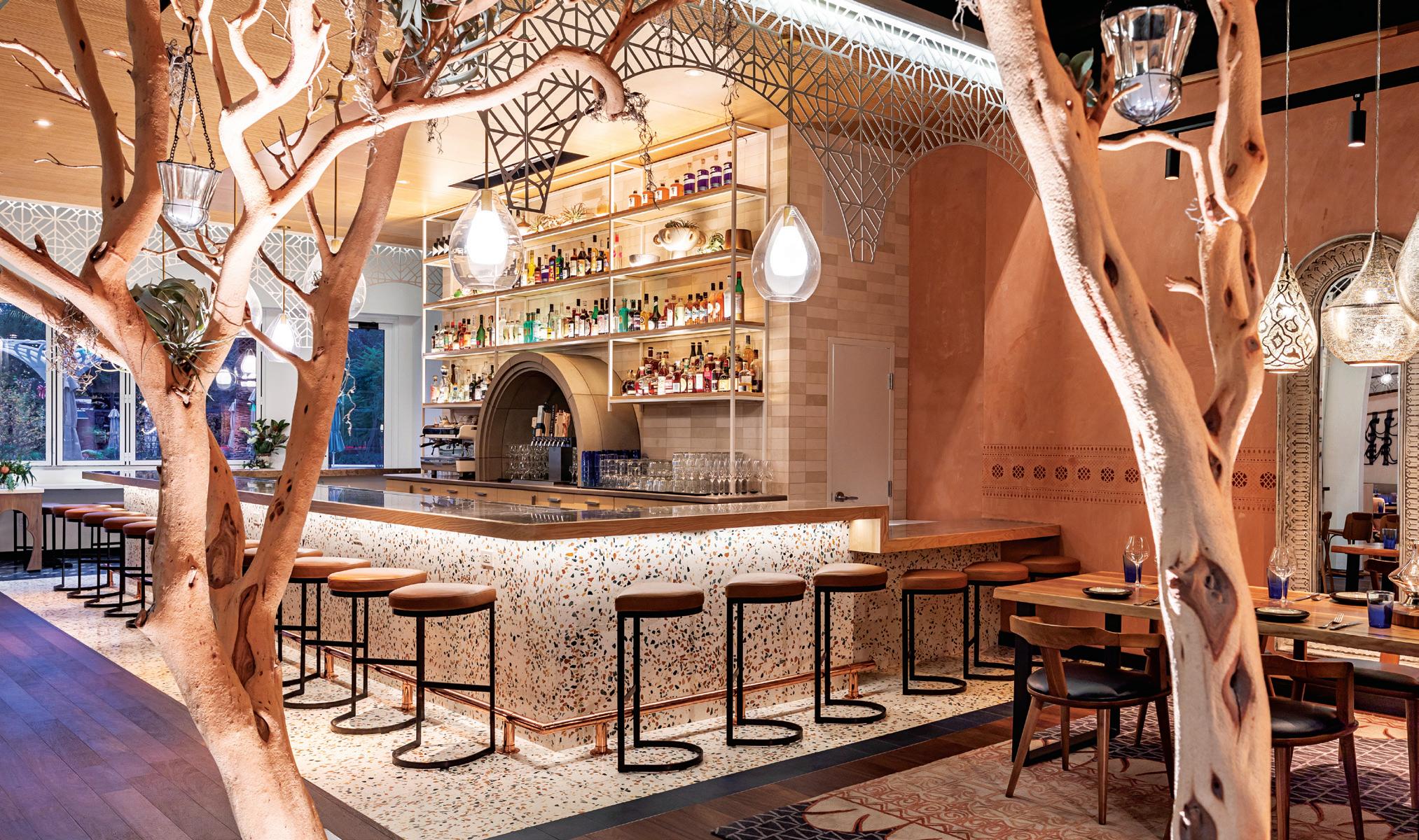
“If you don’t have an understanding as a server or sommelier on how to read someone or craft more complete experiences…you’re not creating relationships that lead to long-term repeat guests,” she adds.
Training has to be a consistent part of the everyday restaurant life, advises Serena Harkey, wine and spirits director at San Francisco’s Vine Hospitality. at includes “daily lineups allowing sta to taste wines and making it incredibly immersive; having tech sheets available is one thing, but truly creating opportunities to experience and talk through wines on a daily basis is absolutely essential,” she says.

As full-service restaurants sharpen the next generation of sommeliers, their hospitality education seeks to nd the right balance of complexity. “When you’re teaching, sometimes you need to lecture, but it’s better if you discuss.
Team members learn better when they have a conversation and talk about what the wine is way more than if they just listen to what you’re saying or read what you wrote down,” Van de Water explains.


Gracious Hospitality’s innovative wine intensives span from a six-month sommelier internship to 13-week COTE College to Wine Wednesday. “It’s three different levels of commitment and engagement,” explains Van de Water; all are no-cost opportunities where employees are paid for their time.
COTE’s Wine Wednesday o ers “bitesized, digestible wine education” on Wednesday pre-shifts with an emailed detailed doc while 13-week COTE College mirrors a CMS introductory course or WSET Level 2 with 90-minute bi-weekly classes surrounding 4-5 regional wines with tastings, quizzes, and a nal exam. And the hands-on Sommelier Internship is an eight-hour day per week plus

“When your staff drive that revenue because they’re so empowered and passionate about what they’re talking about, [the investment will] come back to you easily.”SERENA HARKEY


bi-weekly sessions over six months with extra studying. It’s designed for staff wishing to become sommeliers, wine directors, directors of operations, general managers, or owners.


Ongoing conversations about wine poured over the restaurant’s culture, sta , and guest experience are key. And when COTE increased team education on speci c wine products, “We’ve seen
ence for guests, but a trustworthy experience when our sta knows and understands what they’re selling.”

You have to provide reasons to work at your restaurant beyond financial ones, says Van de Water. “It’s always been important to us to create a restaurant culture where people come to work because they feel energized and respected, not just because they make
tion for the server trying to add to the check; upselling is based on knowledge,” explains Thomas Price, Master Sommelier at 1856 Culinary Residence and director of wine education at Auburn University in Alabama.
“Knowledge drives restaurant sales, so the big bene t is knowledge and product familiarity enable the sommelier to sell more,” Price says, “ at investment in team member knowledge will translate into enhanced sales on your restaurant oor.”
Pro ts and revenue bumps from inhouse wine education are a plus, but to see the bonus, you need to create an education budget. “It doesn’t have to be a ton of money,” Van de Water explains, “It has to t into your prime cost somewhere, but I think the numbers can be pretty small.”
Working with distributors and wholesale partners for trainings can help with cost as “they go into the storytelling component of wine and how to present it,” says Price, who adds that it helps “1,000 percent” to have different educators teach, from wine directors to sommeliers and distributors to wholesale partners.
we get better wine by the glass sales,” says Van de Water.


roughout Vine Hospitality’s nine restaurants, they use a similar range of knowledge. Harkey’s weekly team meeting empowers beverage managers to build wine lineups for daily sta education, and a monthly 90-minute formal presentation, tasting, and comparative analysis allows her to infuse deeper knowledge. Vine also invests in CMS and WSET certi cations, with their three- to ve-year company plan including even more robust and interactive in-house wine education.
“We want to continue investing every day in people on the oor who are talking to guests and building their knowledge because it creates more con dence for sta when they’re knowledgeable and excited about our menu,” Harkey says, “Not just creating an intellectual experi-
money, and it’s really valuable to work somewhere you feel is actively invested in teaching, mentoring, and coaching you to help you grow whether you grow with us or somewhere else.”
Serious restaurant wine programs backed by education also draw tra c to increase revenue and pro ts, adds Harkey. “I can definitely attest to investing in employee education having a profound impact on wine sales. When your sta drive that revenue because they’re so empowered and passionate about what they’re talking about, [the investment will] come back to you easily,” she says.
It’s the profound wine list knowledge and ability to eloquently tell wine and vineyard stories to the customer that cuts the bottom line di erence. “Your knowledge is when you can actually upsell. Upselling is not just a sugges-
“It’s incredibly rewarding to watch people grow and blossom,” says Van de Water. And education gives exceptional restaurant team members intimate knowledge on how to weave wine into the larger dining experience because they know the brand inside and out as they leveled up from server or bartender, she adds.
In-house wine education “just drives revenue, and it’s a solid business investment,” explains Harkey. When your sta members move from selling $80 to $120 bottles of wine to being comfortable talking about $250 or $500 bottles, that’s from creating “an environment where not only do guests take you seriously, but everybody around you respects and honors the craft, product, and restaurant so much more,” Harkey says. “Education develops respect, trust, and honor for what you have within your four walls, but also helps improve your business, its growth, and draws more guests in.”

KELLI VALADE HAS COME FULL CIRCLE IN HER RESTAURANT CAREER, FROM SERVING AS A 16-YEAR-OLD HOSTESS AT AN ALLDAY BREAKFAST BUFFET IN UPSTATE NEW YORK TO BECOMING CEO OF DENNY’S, THE 24/7 CASUAL-DINING BREAKFAST GIANT.




































CEO Kelli Valade is renewing relevance at the 70-year-old breakfast giant by getting back to 24/7 operations and implementing new tech and menu innovation, elevating the nearly 1,600-unit diner chain to new heights.
30 30
# 10 ON THE FSR 30 LIST
is a star example of someone who grew up in the restaurant industry and made it all the way to the top as a brand CEO. Her love of food began as a kid cooking and eating Italian meatballs and dishes in her grandmother’s kitchen, and Valade landed her first restaurant gig at 16 as a hostess at a TJ’s Big Boy in upstate New York, where people came in for the all-day breakfast buffet. “I actually find it both ironic and just a beautiful part of the story to say it’s come full circle for me, being at a Denny’s and now Keke’s,” Valade says. “That shaped everything for me after that.”
“I always thought restaurants are more than just food and sustenance,” she continues. “And I think I just got the bug from day one. So it's all I've ever done. It’s fast paced, it’s amazing for me, and afforded me an opportunity to go to college.”
Fast forward to Valade’s grand entrance into Denny’s as CEO in June 2022, which was immediately met with another seismic event: the brand’s $82.5 million acquisition of Keke’s Breakfast Café just a month
later. As an iconic 24/7 diner chain that’s been around since 1953 (originally called Danny’s Donuts), Denny’s has become something of a big sister to Keke’s, with an emphasis on ‘big’— Denny’s closed out the first quarter this year with 1,594 restaurants. Meanwhile, emerging breakfast eatery Keke’s has 54 locations open, including 46 franchised units and eight company-operated stores.
“Strategically, this is an amazing acquisition for us and a growth vehicle for us. But it's also really important that we keep the two brands distinct,” Valade notes. “So whatever touches the employees, whatever touches the guests is separate, and then we leverage our great model franchisor approach in shared services.”
The company anticipates opening 35 to 45 restaurants this year, including eight to 12 Keke’s. “That's a category that's really exciting right now, so we are really positioning that for some pretty aggressive growth,” she says. Florida-
based Keke’s cafes are only open from 7 a.m. to 2:30 p.m., but its AUVs are comparable to Denny’s (just shy of $2 million) and profit margins are in the upper teens to 20 percent.
Luckily, Valade is no stranger to rapid growth. Prior to joining Denny’s, where she succeeded former CEO John Miller, she spent 22 years at Dallasbased Brinker International. She joined as director of On the Border Mexican Grill & Cantina under Miller, who was president at that time.
In 2016, Valade was promoted to Brinker’s executive vice president and brand president of Chili’s Grill & Bar— the company’s first female brand president four decades after being founded.
“At that point is when I really just dug in to learn and fill any gaps, whether it was finance or leaning into development and real estate,” she says. “I also was, I think, known for raising my hand and being a little bit scrappy. If you gave me an assignment, whether it was inside HR at the time or even inside ops later, I
didn't necessarily color inside the lines— in a good way.”
At Chili’s, she was responsible for more than 1,600 restaurants and established a clear vision and bold strategies, such as helping the brand to simplify its menu and reduce the number of food offerings to speed up service. She also cultivated a purpose-driven, positive culture, like establishing a “Women Taking the Lead” initiative to educate and encourage young female Chili’s leaders to dream bigger and achieve their career goals.
“I was just incredibly lucky [and] blessed; I’ve had amazing opportunities. It was a windy path, I like to say; it wasn’t a straight-up vertical,” she says. “I took that turn to COO and everything changed for me then.”
Most recently, Valade led Red Lobster as CEO, and in just eight months bolstered the seafood chain’s leadership team, filling the C-suite with industry leaders.
Now, Valade is looking to make a pos-





itive impact at Denny’s and ensure the 70-year-old breakfast giant stays relevant for young diners.


When first looking at the opportunity to join Denny’s, Valade recalls noticing the massive potential of the breakfast giant. “I could see a yes, mature brand, but one that was being invested in.”
The casual-breakfast dining chain recently invested more than $25 million to improve and upgrade kitchen equipment, propelling the development of menu innovation while increasing efficiency and reducing waste. After completing the initiative, the brand also launched a new menu featuring a custom augmented reality experience.
On the menu innovation side, recent additions like Mac N' Brisket Sizzlin' Skillet, Oven-Baked Lasagna, and Caramel Apple Pie Crisp are resonating with guests and outperforming expectations, leading to an 8.4 percent increase in systemwide same-store sales in the first quarter of 2023—the strongest new dinner product launch since prior to the pandemic. Plus, a new conversion to a
common network service provider will improve kitchen verification systems, server tablets, and QR pay. Denny’s is also making progress on its “big three” near-term initiatives, which include staffing, 24/7 operations, and value.
“Yes, it's a 70-year-old brand, and there's some relevance and up-to-date elements to that model,” Valade notes— yet she also loves the clear positioning of the Denny's brand. “We say we're America's Diner for today's America, and how can you not love that? We uniquely hold that position, and in a crowded segment, whether it's family dining or casual dining, full-service restaurants, the point of difference can mean everything to people. And just leaning into and being the best version of yourselves is sometimes the best strategy.”

Part of Denny’s core identity goes back to when it was first founded as a coffee shop and open 24 hours a day serving breakfast, lunch, and dinner. When Denny’s started franchising in 1963, most franchise agreements required 24/7 service in most locations. But when COVID hit, many Denny’s had to close for the first time, and some still have limited hours of operation.
Nearly 72 percent of Denny’s restau-
rants are back to 24/7 operations, Valade says, which is the result of partnering with franchisees to help support them any way the brand can. “We’ve also continued to get more and more research that says, ‘look, your customer does want to know that we’re open, they do want to know they can count on Denny’s for that unique core equity for this brand,’” she adds. “Just watching the consumer come back to that normal behavior, that true recovery now in place in 2023, is helping build that business case. More and more every day get back open.”
In the last four years, Denny’s consumer base has skewed “much younger than you would imagine,” Valade notes; 45 percent of the chain’s consumers are Gen Z or millennials, who typically frequent the brand’s late-night day part and virtual brands.
“And those virtual brands, as you can imagine, are a sweet spot for us. It’s something we can continue to do really well,” she adds. “And while we are always focused on the experience in the restaurant, we also have close to 22 percent of our sales coming from those virtual brands and just off-premises takeout as a whole … So that's pretty exciting for us, too.”
9 PLANT-BASED INGREDIENTS
Your food can do a world of good. Finless Plant-Based Tuna meets front-of-house seafood demands and simplifies backof-house operations, while alleviating pressure on the wild fish stock supply. It’s easy-to-use, versatile, not subject to price fluctuations and has a long refrigerated shelf life — so you can craft the flavorful dishes your customers crave and support a brighter future where oceans thrive.
Marinated Plant-Based Tuna with charred chili aioli, quinoa, kale, nori, edamame, avocado, and sesame.










 BY FSR STAFF
BY FSR STAFF


Our new report this year highlights the powerhouse brands making legendary status in restaurant chain history. Though varied by cuisine type, these fullservice restaurants all showcase recent growth rooted in culinary and technological innovation, and have not only stood the test of time, but also survived the pandemic and come out stronger on the other side. The below powerhouses have mastered the art of crafting unforgettable dining experiences at affordable, everyday prices, and capturing customers’ attention and loyalty. In this comprehensive report, we delve into the captivating world of these full-serve, casual-dining titans.
1Heading into fiscal 2023, guest satisfaction metrics at Olive Garden were at an alltime high, thanks in large part to improved staffing levels, along with ongoing efforts to streamline operations and reduce complexity in the kitchen. Parent company Darden Restaurants has underpriced inflation by more than 400 basis points and underpriced the full-service segment by more than 600 basis points in the past three years, and consumers have responded by staying put. At the same time, the company has committed to stopping deep discounting. The closest it came to a promotional deal was the return of Olive Garden’s Never-Ending Pasta Bowl in Q2. The item, which is likely to be the chain’s only LTO this year, was priced $3 higher than its previous rollout, but still delivered a sizable lift to traffic and sales during its seven-week run.

2To gain perspective on the run Texas Roadhouse has put down, it helps to look back. In 2017, this was a $2 billion company with 549 locations across its footprint. Five years later, pandemic and all, the chain doubled to about $4 billion in revenue as it spread to 697 venues (including 652 Texas Roadhouses, 40 Bubba’s 33 units, and five Jaggers, the company’s fast-casual offshoot). But beyond material growth,
Texas Roadhouse’s story is one of resiliency and reemergence, and in both cases, the brand leaving the pandemic behind is more dynamic than ever. It opened 2023 generating weekly sales north of $146,000. Texas Roadhouse averaged more guests in the calendar’s first seven weeks than any period in its history. On the doorstep of COVID, the brand generated roughly $113,777. One of the big kickers has been to-go sales— off-premises accounted for $8,741 previrus. Today, it’s closer to $19,000. And the momentum isn’t tailing off. Texas Roadhouse grew its same-store sales 12.9 percent at company units in Q1 2023 and hit a record weekly figure of $148,437, besting a high mark set the previous quarter.



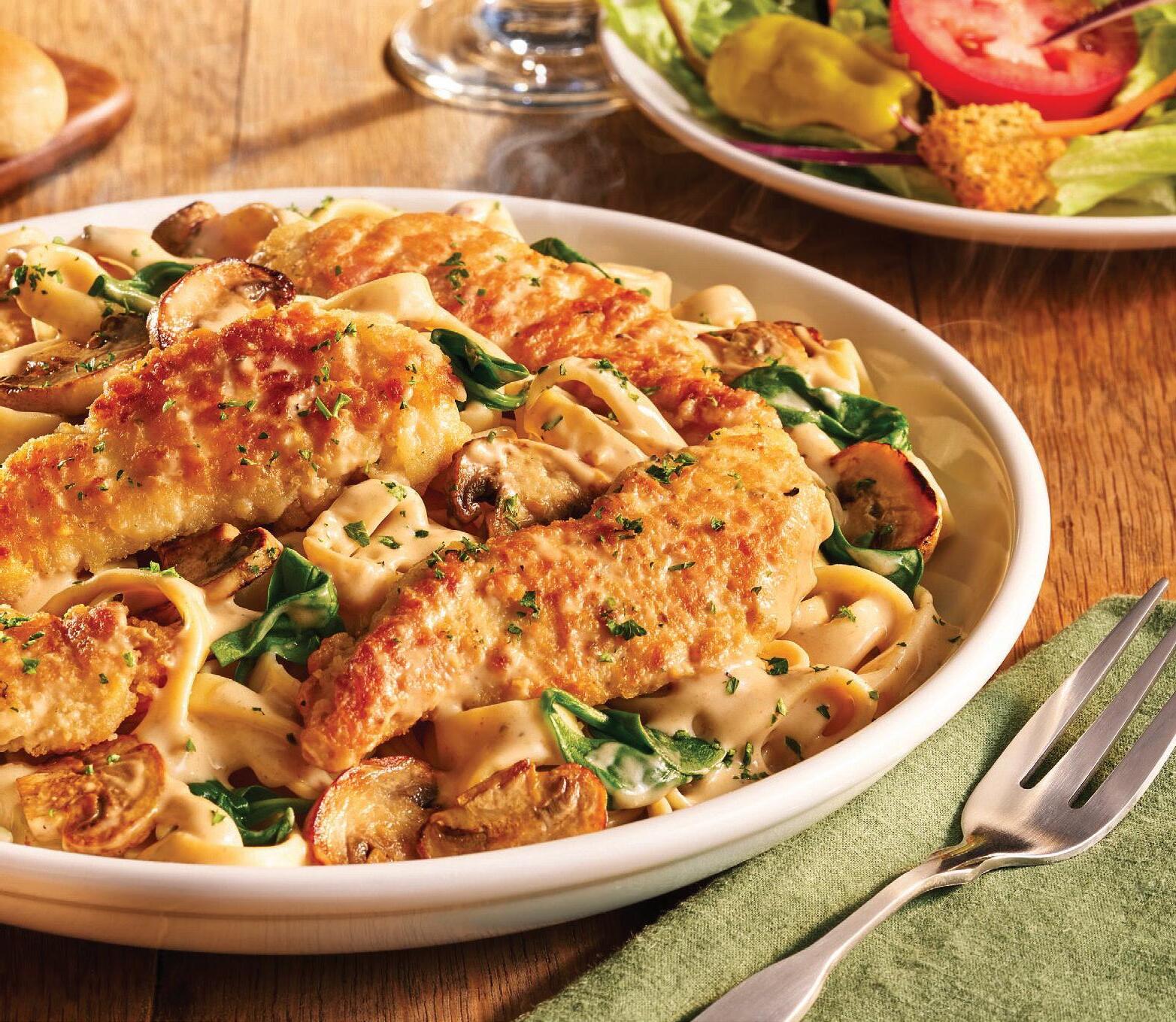

 DARDEN RESTAURANTS (4)
DARDEN RESTAURANTS (4)
Chili’s CEO Kevin Hochman began his tenure in June 2022, and his impact was immediate. The industry veteran entered the brand with big initiatives, like the reduction of deep discounting, cutting costs in the back of house, and rethinking the company’s approach to virtual brands and technological initiatives. When Hochman joined last year, Chili's discounted items mixed 37 percent; now the chain is around 29 percent. Chili’s discontinued virtual concept Maggia -

no’s Italian Classics to focus more on dine-in and suspended testing of “Rita the Robot." Cost savings cleared the way for Chili’s to implement TV advertising for the first time in three years.
Tony Moralejo, after three years as president of Dine Brands’ international segment, assumed the president role in January when John Cywinski headed to QDOBA. He stepped into a rocky operating environment. On the positive side, the chain closed 2022 with same-store sales growth of 1.7 percent—its eighth straight period of positive gains. It also lapped a previous year result of 9.1 percent over 2019. However, Applebee’s, which closed about 300 underperforming U.S. units across a five-year stretch, had to scale back previous plans to hit net unit growth in 2023. Yet it still believes it’ll open more stores than last year, only with a net loss of 10–20 outlets. But even with macroeconomic pressures stalling development, the brand continues to serve a resilient guest. The eight-quarter streak stretched into nine to begin 2023, with comps rising 5.1 percent. And Applebee’s told investors it held its No. 1 ranking across key consumer metrics like convenience and variety, per the company’s proprietary third-party tracker. Brand awareness was at an alltime high thanks to affordability and menu breadth. Sales rode promotions and abundant value programs, giving management reason to not only be optimistic, but to feel insulated against whatever challenge comes next.
5Within the past year, Buffalo Wild Wings has been no stranger to menu innovation. In June 2022, the sit-down sports bar chain launched Happy Hour and its new Bird Dawgs—hand-breaded chicken tenders on a brioche bun, loaded with sauces and toppings. The chain followed that up a month later with its Saucy Chicken Sandwich, taking a page out of the quick-service playbook. The major difference being the chicken can be covered in any of the brand's 26 signature sauces. Then, in August 2022, the casual-dining chain entered the pizza category with its Boneless Bar Pizza, an item featuring a thin-crust base topped with boneless wings. It also rolled out General Tso's and Sweet Chili Lime sauces ahead of summer.

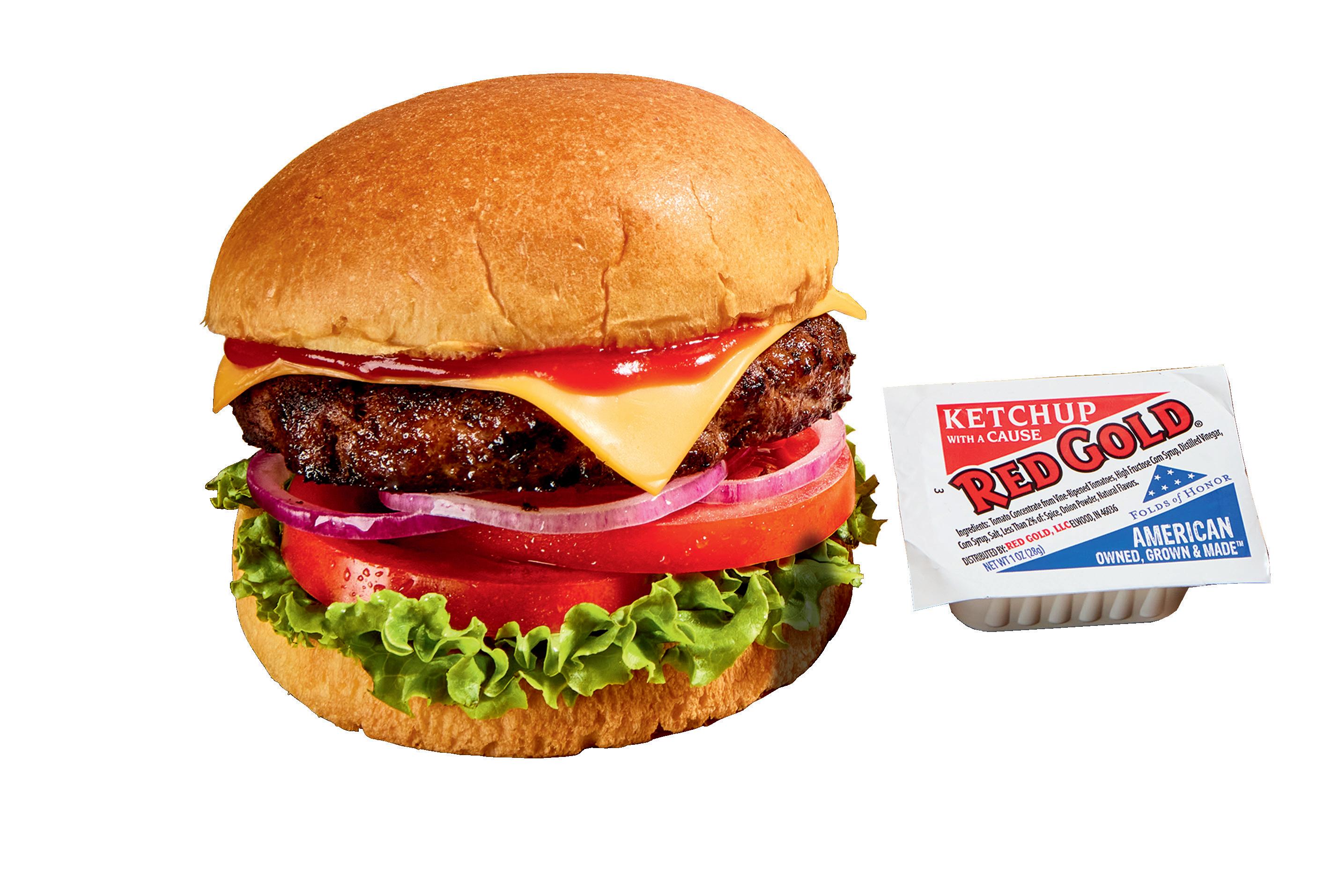










Though IHOP recently decided to pull the plug on its fast-casual spinoff pilot program ‘Flip’d,’ the casual-dining breakfast chain opened 19 locations systemwide in the first quarter of 2023, ending Q1 with 1,790 stores. Driven by internal brand research, IHOP launched its largest menu evolution to-date in March, with a lineup stretching across dayparts and categories and a goal of highlighting quality ingredients, and options that meet the indulgent and lighter side of cravings, choice,

7Despite the threat of recession and decreased foot traffic, Cracker Barrel finished the 2022 fiscal year strong with an estimated $2.6 billion in sales and an AUV of $3.92 million. The family-style restaurant leaned into both menu strength and value proposition with programs like Build Your Own Homestyle Breakfast, 20 meals under $12, $5 takehome meals, and a growing beer and wine menu. The company also rolled out a new app later in the year that will serve as the foundation for a loyalty program and boost interest with a younger customer base. Efforts to improve technology didn’t stop there; the chain also introduced Apply Pay and Google Pay later in Q4.
and value. The revamp featured a fresh take on Sweet & Savory Crepes, Eggs Benedicts, Ultimate Steakburgers, a new Four-Cheese Crisp, fish and shrimp, and the return of Cinn-A-Stack Pancakes. Additionally, the brand enrolled 5.5 million members in the first year of its loyalty program launch, which drives frequency, share of wallet, and average check, and allows IHOP to better engage with guests through targeted promotions and differentiated in-restaurant experiences.

Outback’s growth trajectory is becoming larger by focusing on a smaller prototype. The store design is 5,000 square feet—a reduction of 16 percent—thanks to restructuring in the kitchen and dining room. However, it was done without impacting the guest experience or cutting the number of tables. In addition to a new size, the prototype brings a bright ambiance, a reimagined bar, and an elevated décor package.—and costs 20 percent less than a traditionallysized outlet. Advanced grills and ovens, kitchen display systems, and handheld tablets will be incorporated into the new building.



























































































































Like its sister concept Olive Garden, LongHorn continues to reap benefits from Darden’s decision to underprice inflation (400 basis points over the past three years, industry-wide). LongHorn set weekly sales records multiple times in its most recent quarter. The brand’s average weekly sales of $96,905 pulled out to annualized volumes of $5.01 million. That’s a major jump from 2020, when it was $76,101. LongHorn’s total sales of $1.9 billion represented a company record as well. Comps rose 10.8 percent and the chain enjoyed 17.4 percent margin, 80 basis points higher, year-over-year. When Darden acquired LongHorn, it closed the following year (2008) with 305 locations. That would balloon to 514 by 2019 and now sits at 554.

The casual breakfast dining chain recently invested more than $25 million to improve and upgrade kitchen equipment, propelling the development of menu innovation while increasing efficiency and reducing waste. After completing the initiative, the brand launched a new menu featuring a custom augmented reality (ar) experience. Recent additions like Mac N' Brisket Sizzlin' Skillet and Oven-Baked Lasagna are out-

performing expectations, leading to an 8.4 percent increase in systemwide same-store sales in the first quarter of 2023. Denny’s is also making progress on its “big three” near-term initiatives, which include staffing, 24/7 operations, and value.
With a new Cheesecake Rewards loyalty program set to launch nationwide this summer, the casual dining concept considers itself a leader in the experiential dining category, differentiated by its 235 menu items made fresh from scratch, plus an integrated bakery that produces more than 60 cheesecakes and other baked goods. Same-store sales at the Calabasas Hills, California-based company rose 5.7 percent in the first quarter of 2023 year-overyear, and revenues reached $866.1 million.





























































COVID hit Golden Corral hard, with the buffet chain losing a net of 124 restaurants across 2020 and 2021, but the bounce back is already underway. Last year, the brand grew by a net of three stores.

12


13
The 644-unit chain shrunk its footprint over the past several years, but parent company Thai Union is confident in the seafood chain’s strategy for a turnaround, which includes a focus on menu enhancements, value deals, and operational improvements.
14
With new CEO and industry vet GJ Hart at the helm since last July, casual burger brand Red Robin launched a five-point “North Star” plan covering everything from staffing to food quality. More updates are on deck this year, including flat-top grills and ample menu innovation.
17


The breakfast leader is simply one of the nation’s hottest chains. It jumped out of 2023 with same-store sales growth of 12.9 percent, year-over-year, lapping 21.9 percent growth in 2022. Perhaps most impressive, though, First Watch reported same-restaurant traffic growth of 5.1 percent, which was 11.7 percent better than Q1 2019.


15
At over 1,900 U.S. locations, Waffle House has become a beacon of breakfast since 1955. The family-style restaurant continues to serve guests 24/7, 365 days a year, and holds onto its cheap prices to keep its cult-like following alive.
16
Sales at BJ’s Restaurants grew 18.1 percent to $1.3 billion in fiscal 2022, with comps up 14 percent. The momentum is giving CEO Greg Levin confidence in the company’s long-term ability to double its footprint and become a $2 billion business.
18
When Rohit Manocha took over as CEO in May as the chain searched for a replacement, the brand said it was entering “a new phase of revitalization.”
TGI Fridays’ same-store sales last year grew 8 percent against 2019, and it also recently introduced a fresh rewards platform.

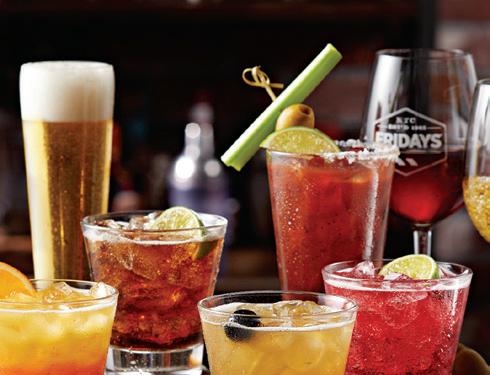

19
Executives at the 219-unit chain see plenty of runway for both off-premises-only and full-service bistro models. The company is embarking on a brand refresh across the U.S., and all of its domestic restaurants are receiving renovations, including new decor and menu presentations.
Hooters is celebrating its 40th anniversary by encouraging more growth beyond its current 288-unit footprint. The brand revealed in March it was giving away 40 weeks of free royalties for any new franchisee that signs in 2023.






By the time Jeff Warne was promoted to CEO of California Pizza Kitchen in December 2022, the 146-unit chain was on the upswing after filing for bankruptcy in mid-2020, and had returned to pre-pandemic sales levels thanks to investments in CPK Rewards, menu innovation, and improvements to the digital guest experience.
21
Dave & Buster’s is looking to own the eatertainment category for all ages with its $835 million acquisition of Main Event. Strategies are underway to make guest flow more efficient and decrease complexities in back-of-house operations, plus develop the right staffing model, reporting tools, and management approach to maximize throughput.

Carrabba’s opened a restaurant in Tampa in Q3 of 2022, marking its first new location since 2015. Bloomin’ Brands CEO David Deno said the 218-unit Italian chain earned the right to expand after landing among the company’s top performers for the past several years.
Despite inflationary pressures, Bob Evans Restaurants manages to fulfill its promise of “keeping the entire family full and happy for less.” The New Albany, Ohio-based American casual dining chain has locations in 18 states and offers more than 30 meals for less than $8.99.
The 65-year-old classic diner chain shook up its traditional operating model recently with a refreshed prototype, virtual partnerships, and new labor-saving technology, which lowers development costs for franchise owners. In March, the restaurant and bakery chain announced the signing of a new franchise agreement to grow its presence across Ohio.
At 61 locations, The Capital Grille represents the fine-dining side of Darden Concept’s portfolio. The steakhouse seeks to draw in customers through its extensive wine menu and private dining experiences. Overall, Capital Grille performed well during the fiscal year of 2022, sharing an 11.7 percent same-store sales growth in Q3 with Cheddar’s Scratch Kitchen.
METHODOLOGY: The FSR Top 30 Report leverages multiple data products and services from Circana’s unmatched research product portfolio, combined with experienced analyst estimates. Sales estimates represent each chain’s total U.S. system for the year ending December 2022, and are anchored on CREST®, Circana’s flagship syndicated study of consumer purchases of restaurantprepared meals, snacks, and beverages. Unit counts source to the Fall 2022 release of Circana’s ReCount ® service, a census of chains and independent restaurant locations regularly updated since 1988. Today, ReCount provides unit counts and trends for over 1.2 million foodservice operators. These primary sources, combined with other proprietary Circana data, public reporting, and analysis, generate this new, industry-standard restaurant ranking. Circana is the leading advisor on the complexity of consumer behavior. Through unparalleled technology, advanced analytics, cross-industry data and deep expertise, we provide clarity that helps almost 7,000 of the world’s leading brands and retailers take action and unlock business growth. We understand more about the complete consumer, the complete store, and the complete wallet so our clients can go beyond the data to apply insights, ignite innovation, meet consumer demand, and outpace the competition.

The casual-dining seafood concept, helmed by Bloomin’ Brands, saw a 5.2 percent rise in same-store sales in Q1. With the addition of a Sunday brunch to the menu, a rotating array of seasonal favorites, and an emphasis on catering, Bonefish Grill is doubling down on growth trajectories.


Since Darden acquired Cheddar’s in 2017, it’s grown to be the third-largest brand in the group’s portfolio. Overall, same-store sales increased by 11.7 percent in Q3, accounting for a record $1.56 billion. Darden’s CEO Rick Cardenas believes the brand’s strong leadership team will catapult it to success.
The Brazilian all-you-caneat steakhouse chain signed a lease to open its third Bay Area location in California, supporting the brand’s continued 15
percent annual restaurant growth across the U.S. In 2023, Fogo de Chão signed 12 new domestic and international leases and opened in Washington, Maryland, California, and New Jersey.
Despite shuttering 185 restaurants and filing for bankruptcy in late 2020, Ruby Tuesday has rebounded by reducing liabilities and restructuring its organization. With the help of a “Daily Deals” program and a reenergized focus on off-premises business, the classic bar & grill chain continues to make a promising comeback.

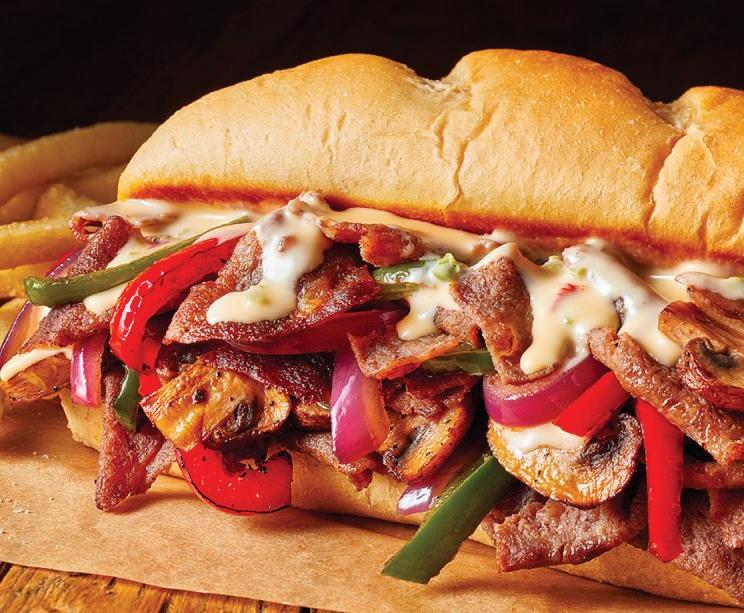
THE ISSUE: Safe fryer oil disposal.


THE SOLUTION: The Shortening Shuttles® allow you to safely and easily pump out the hot oil into the dumpster.

THE ISSUE: Limited space for necessary equipment.
THE SOLUTION: Small footprint of Shortening Shuttles®

Generous capacity ranging from 5.5 to 12.5 gallons.
THE ISSUE : Quality. There is so much junk out there folks are reluctant to buy ‘more junk.’
THE SOLUTION: 30+ experienced industry provider of PROVEN quality equipment. Worcester
Los Dos Potrillos is opening Colorado’s first hybrid fast-casual Mexican restaurant.
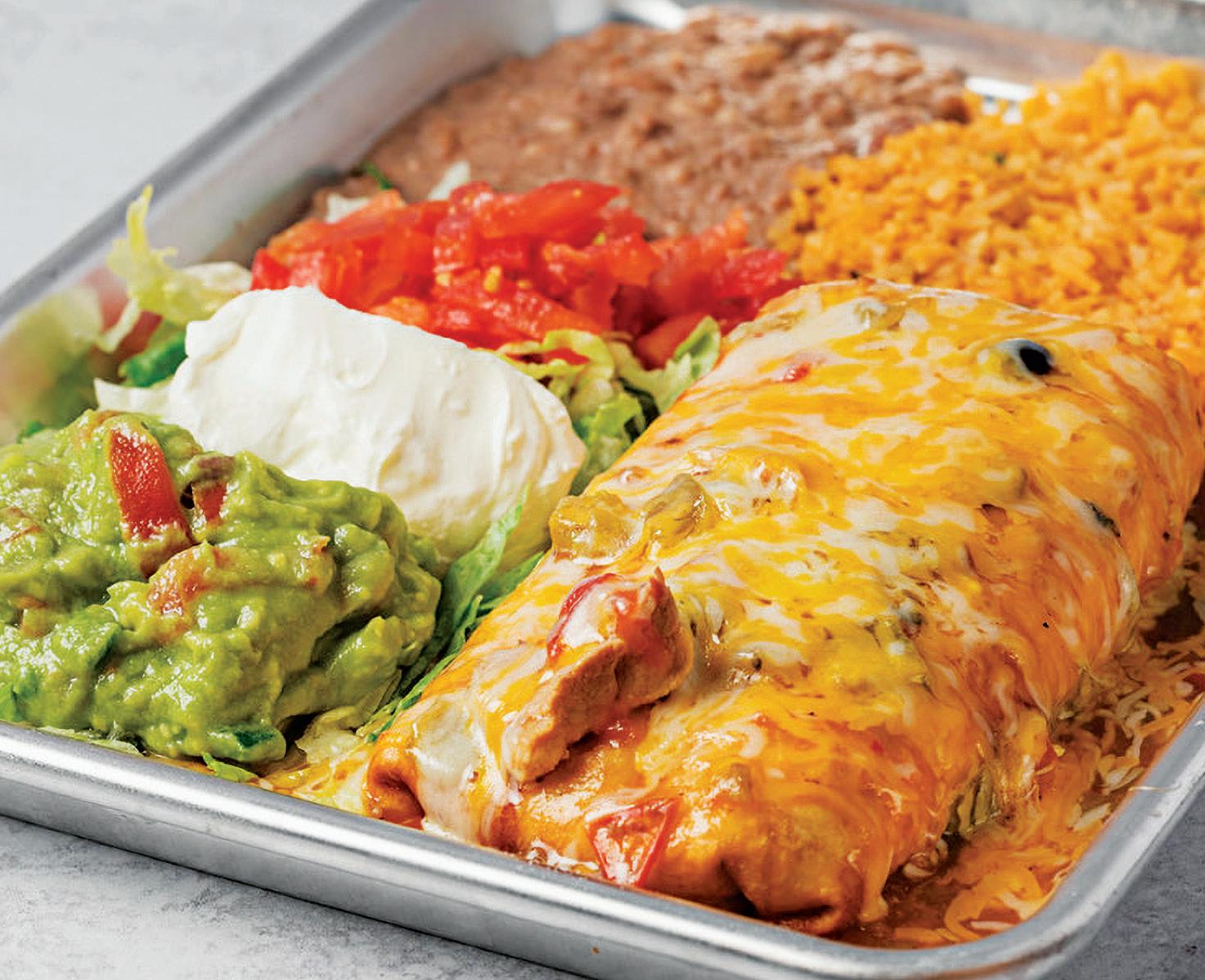
JOSE RAMIREZ, the seventh of 15 children, came to the U.S. from Mexico in search of a better life for his family. His goal was to open a restaurant, and after years of saving and sleeping in his car after grueling shifts at work, he was able to do so. He named his restaurant Los Dos Potrillos—or “the two colts” in English—after his sons, Luis and Daniel Ramirez.
When the first Los Dos Potrillos opened its doors in 2002, the “now open” sign was tied onto a pole; Jose did not have a ladder to hang it properly. He was running a restaurant with a dream and only $5.18 in his bank account. His sons Luis and Daniel Ramirez are true restaurant kids—they ate, slept, and had birthday parties at the Centennial, Colorado-based Mexican establishment.
ESTABLISHED: 2002
COFOUNDERS: Jose, Luis, and Daniel Ramirez
HQ: Centennial, Colorado
CATEGORY: Mexican UNITS: 6
The initial location expanded from 1,500 to 4,900 square feet in a few years, and by 2008, Jose opened another restaurant. For years, Jose was satisfied with having two locations. This was his American dream. His guests enjoyed the authentic Mexican cuisine and a family friendly, “hole-in-the-wall” atmosphere. The menu quickly became a hit, with made-from-scratch American wagyu steak fajitas, family platters, taquitos, etc. Customers sipped on margaritas,
beer, and wine during happy hour.
In 2016, Luis and Daniel decided to become more involved and expand the brand’s footprint. By 2018, Los Dos Potrillos doubled in size with locations throughout Colorado in Highlands Ranch, Littleton, and Parker.
The Parker location, dubbed Los Dos Potrillos Mexican Restaurant y Cerveceria, is the only one of its kind in Colorado. It is part Mexican restaurant, part brewery, serving taquiza and margaritas under the same roof. Twelve distinct types of beers are offered, from Mexican lagers to IPA sours.
As the brand scaled to four locations,
food trucks, and more, Luis and Daniel created a corporate structure called Ramirez Hospitality Group to manage operations, in which the brothers both serve as co-CEOs. “The bigger we get, the smaller we become,” Daniel says.
This year served as a turning point for the Mexican eatery. The Ramirez brothers branched out with a hybrid fastcasual concept called Los Dos Potrillos Cocina y Cantina, which debuted in April.
“It’s everything that you love about our current stores, but we don’t have servers, only food runners,” Daniel explains. “We have a great bar program and our top 50 menu items from the same quality [as the other locations].”
For Daniel, the biggest hurdle in
developing a fast casual was organizing the floor plan. Even with 5,000 square feet to play with, lines were becoming a problem and tables were not flipping fast enough. The solution to this was creating two different stations within the line— one offering free samples of homemade tortillas, and the other green chili and queso. This was particularly helpful for families waiting in line with their children. “Margins there can be a little fine, to say the least,” Daniel says. “But by the time they get to the front of the line, they already know what to get. They are trying combinations [of items], and it has worked to our advantage.”
Other drawbacks, such as understanding the differences in customer attitudes and behavior between fast casual and full service, have been noted. However, Daniel describes this as a learning process. His goal is to find pockets along Colorado’s I-25 highway to open more restaurants like the cantina. However, he does not foresee any partnerships with third-party delivery companies that most quick-service-style establishments have. “We love to hand food to the customer, and offer an experience when you walk in,” Daniel says. “The restaurant looks fresh and Instagram friendly … when we go into a new market, we want to win the community over [by seeing them in person].”
Daniel believes expansion through a franchisee network is possible with the right group of people. Ideally, he is looking for a candidate who loves both the food and the vision of Los Dos Potrillos. He wants to help others craft their American dreams, much like his father
did for his family. “[I want] someone who wants to create a legacy for their family and kids,” Daniel explains. “I want it to feel like it is a family and continue to be a family-owned brand.”
Later this year, Los Dos Potrillos will embark on its first ground-up venture in Castle Rock. The projected 9,000-squarefoot location will have “immaculate, unobstructed views to the south and west side of Colorado,” Daniel says. He goes on to describe it as “the Mona Lisa of Potrillos.”

This location is projected to become the main hub of Los Dos Potrillos, partly because a full brewery and margarita garden will be located on site. The expanded brewery will provide Mexican lagers to other locations, which will streamline the supply chain.
“The lagers are what most people want, and that is the one thing we tend to run out of the most,” Daniel explains. “We do not ever want to tell them we do not have enough to sell. We want to focus on [the brewery].”
By 2028, the Ramirez brothers want to reach 12 locations in Colorado with a mixture of full-service and fast-casual stores. Daniel says there’s room for more growth in Colorado, with a ground-up location already in the works for 2023 and more to come in the next two years.
He also wants to reach $100 million in market sales, and he is confident the brand will hit that goal next year with just six locations. Locations are averaging about $7 million per store. Outside of Colorado, Daniel is eyeing Wyoming and Kansas as target markets, alongside the I-25 corridor.
The Ramirez brothers seek to use Los Dos Potrillos as a vessel to open doors and create careers within the industry, just like their father did over two decades ago. Daniel tells the story of one of his store managers, who started at Los Dos Potrillos at age 15, as a host. Now, she is 23 and running a million-dollar restaurant.
“It doesn’t have to be a 15-year-old’s summer job,” Daniel says. “It can be a career. Age does not matter; it is about enjoying and loving what you do.”


Here’s why full-service restaurants need comprehensive delivery solutions, and how to choose from the myriad of technology options available.

CONSUMER APPETITE for convenience is continuing its upward trajectory, and with that, delivery operations are expanding as a proportion of a restaurant’s revenue take. e challenge is to ensure operational costs don’t erode the broader margin for full-service restaurants, with pro tability in the delivery channel becoming more and more difficult to achieve. This is down to increases in the cost of labor, fuel, insurance and marketplace charges, together with difficulties in attracting staff within the sector. Taking everything into consideration, it’s easy to see why restaurant brands are desperately seeking alternatives to ensure their customers get the service they deserve.
ere are many amazing companies helping restaurant brands overcome these challenges, including Flybuy for guest pickup experience, Soundhound for voice-assisted ordering, and 7Shifts for team management. Speci cally for delivery however, customized delivery technology plays a critical role and without it, operating a successful delivery business at scale is simply not possible.
So what does a delivery management solution look like? Firstly, it must focus on the restaurant sector, because a prod-
uct that doubles as an e-commerce or CBD delivery solution does not have a clear enough focus on solving industryspeci c problems. Secondly, it must be easy to access and integrate into a restaurant’s existing tech stack, such as Square, Toast, SpotOn, Olo, Deliverect, Chowly, or Flipdish. Finally, it should provide access to multiple eets like Uber Direct, DoorDash Drive, Skipcart, and Relay, so that businesses have unlimited driver coverage at the lowest possible rates.
A comprehensive delivery solution will automate how deliveries are dispatched,


whether a restaurant is using in-house drivers or third-party eets. is is made possible when a Driver App is part of the solution’s product suite. Of course, inhouse drivers should always get rst priority, but when they are unavailable, the system should have the ability to bounce orders to the chosen third-party eet. at way, restaurants will only use and pay for external eets when the need arises, and the extensive fleet coverage means businesses never compromise on advertised delivery times and needn’t worry about the ability to fulll all orders during peak trading times. With maximum fulfillment, trading hours can be extended and delivery zones expanded, meaning more customers and increased revenue, so everyone’s a winner.
For restaurant operators who outsource all of their deliveries, it’s always
RESTAURANTS THAT OUTSOURCE ALL DELIVERIES SHOULD POOL ORDERS FROM ALL SOURCES AND FILTER THEM THROUGH TO A PREFERRED FLEET—IDEALLY ONE THAT OFFERS DISCOUNTED DELIVERY RATES.
best to pool orders from all sources and lter them through to the business’ preferred fleet. A great delivery management system will easily facilitate this, secure unadvertised and discounted delivery rates from eets, and provide complete visibility of where those thirdparty drivers are and what service levels they are achieving. Needless to say, this is crucially important for owners and managers, because it is vital that the business understands how its customers are being serviced. e alternative— poor ratings and negative reviews— doesn’t bear thinking about.



ere are myriad technologies on the market, but the right delivery tech will have a bunch of built-in key features such as driver ETA for the kitchen, driver chat for both restaurant and customer communication, and automated order stacking so that one driver can take multiple orders to increase e ciency. Having everything together in one tech solution brings a whole new level of convenience
when it comes to managing a busy delivery operation. A state-of-the-art delivery management solution will enable restaurant brands to offer an exceptional delivery experience to the end customer. It will ensure the fastest possible delivery times through automated dispatch, multi-order stacking, smart routing support, and extensive coverage across multiple eets. It’s worth following in the footsteps of iconic brands such as Papa Johns which obsesses about reducing delivery times, since improving that metric tends to lead to more positive reviews, customer retention, and better rankings on marketplace apps.
In addition to recognising the importance of speedy deliveries, businesses providing real-time communication between the restaurant and customer are certainly at an advantage. An ecient delivery management solution should have the ability to send real-time tracking to a customer’s phone, ensur-





ing they know exactly where their driver is once they leave the restaurant. is feature can, of course, be surrounded by branding, displaying strong digital content such as advertising, or access to the brand’s loyalty program. For a restaurant, this engaging feature has added cost saving bene ts—customers won’t need to call with delivery enquiries, and sta won’t spend their time elding calls.
For example, restaurant brand Papa Gino’s has transformed its delivery operations in the last 12 months, simply by adopting the right delivery management solution. It has taken back control of the customer experience, ipped the dynamic between the restaurant brand and marketplace delivery app, and most importantly, realized enormous cost savings through e ciency, with a reported 24 percent reduction in spend. ese bene ts, and ultimately delivery pro tability, are available to all restaurant brands, regardless of which delivery eet it uses or how many locations it has. And there’s more: e price you pay for a comprehensive delivery solution should be a fraction of the savings you will make on each delivery order. e solutions are all out there—restaurants just need to know where to look.
Brian Hickey is Chief Executive Ocer and Co-founder at VROMO – the leading Delivery Management Solution for the restaurant industry. Brian has extensive global experience in the food and beverage markets, having worked in a senior executive capacity with a number of major international food brands and delivery companies such as Procter and Gamble, Danone, Innocent Drinks and Just Eat Takeaway Group. In 2018, he invested in and became a board member at delivery rm, WeBringg. e following year, having acquired a software solution company that supported hot food delivery, the business pivoted to a SaaS model and rebranded as VROMO. Brian became CEO of VROMO in 2021 and has been overseeing the company’s growth in the North American market ever since.
“In addition to recognising the importance of speedy deliveries, businesses providing realtime communication between the restaurant and customer are certainly at an advantage.”




YOUR STORIES OF OPENING A NEW RESTAURANT, OVERCOMING OBSTACLES, AND BUILDING A SUCCESSFUL BUSINESS.
skills in kitchens across Nashville before launching St. Vito Focacceria in 2020. He started selling sfincione-style pizza from his home during the pandemic, which he quickly outgrew. St. Vito bounced around the city, setting up in a food hall and a boutique hotel. Eventually it landed in Hathorne, an acclaimed local restaurant founded by Nashville hospitality veteran John Stephenson, who helped Hanna navigate the process of finding a permanent home. In May, the successful pop-up opened its first brick-and-mortar restaurant. The space pays tribute to St. Vito’s roots with a small footprint and intimate atmosphere, anchored by the Sicilian street food that started it all.


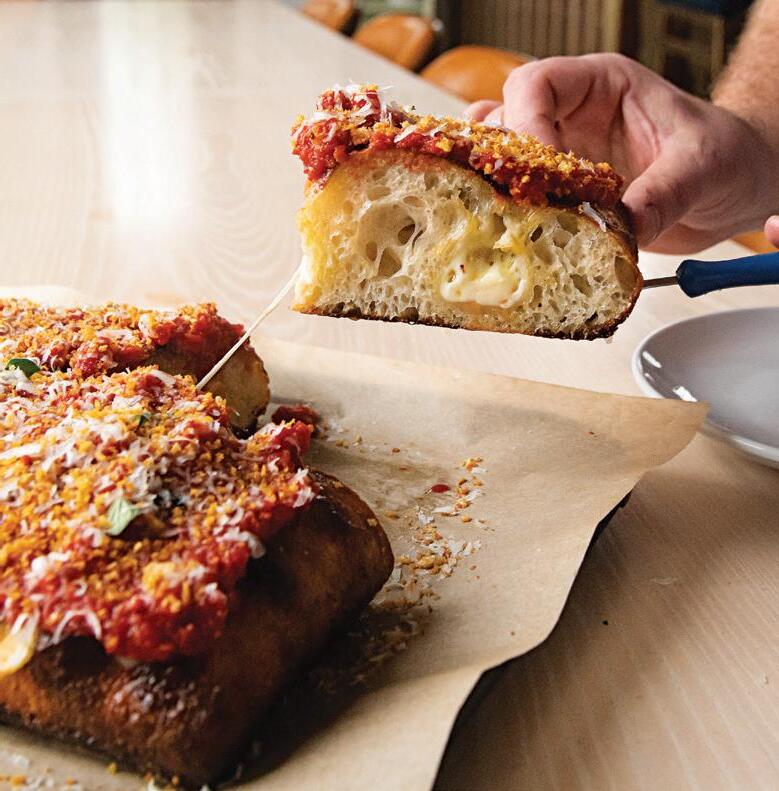
I remembered eating s ncione pizza as a child, and reading about its history in a cookbook. When the pandemic hit, it all clicked. I thought, ‘ is is something that’s di erent enough to keep me on my toes creatively, but also simple and familiar enough for people right now.’ Traditionally, it’s going to be a dense bread that’s layered with cheese and sauce and covered in breadcrumbs. I wanted to take that and put my own character into it by making the dough very light and airy. What’s the point of selling a $30 whole pizza if you can only eat one slice of it?

Each time we moved around, we got better and better. It became really clear that what we were doing was impor-
tant not only for the food scene here in Nashville, but for me, too. I was nally able to do something I’d wanted to do forever, all because of this organic concept that started from my home during a time that was really challenging.
There were so many different investors and so many di erent deals on the table. Wading through all of that was challenging. I’m not going to give you 75 percent or 85 percent equity, only to have you pump a bunch of money into a space and become my landlord, or make me pay you back millions of dollars, and I end up making less money than I would’ve just being a chef somewhere. ankfully, I found the perfect business partner. A few weeks later, they slid a 50-50 deal across the table
to me and said, ‘Everything you wanted, we’re willing to do it.’
One of my big things was that I wanted to treat my sta di erently. I wanted to have a smaller staff with a little more work per person, but I wanted to pay them more money. My business partner agreed to a 20 percent service charge for all in-house dining and a 15 percent service charge for to-go orders. We can put that money into a giant pool, have eight or nine employees max, and split that up between them. We’re going through a transition as an industry, where people are sick and tired of being taken advantage of. We’ve got to gure out a way to wade through all of that and still be smart economically about how we’re doing things.
Chef Michael Hanna honed his culinaryCHEF-DRIVEN MENU IDEAS
FLEXING INGREDIENT VERSATILITY
THE INGREDIENT IS CAPTIVATING A NEW GENERATION OF DINERS
SOCIAL-MEDIA SAVVY INNOVATING WITH LESS
HOW A CHEESE LINEUP IS SPARKING MENU INNOVATION

PLUS
THE POWER OF PIMIENTO
THE FAN FAVORITE SPICES UP ANY MENU
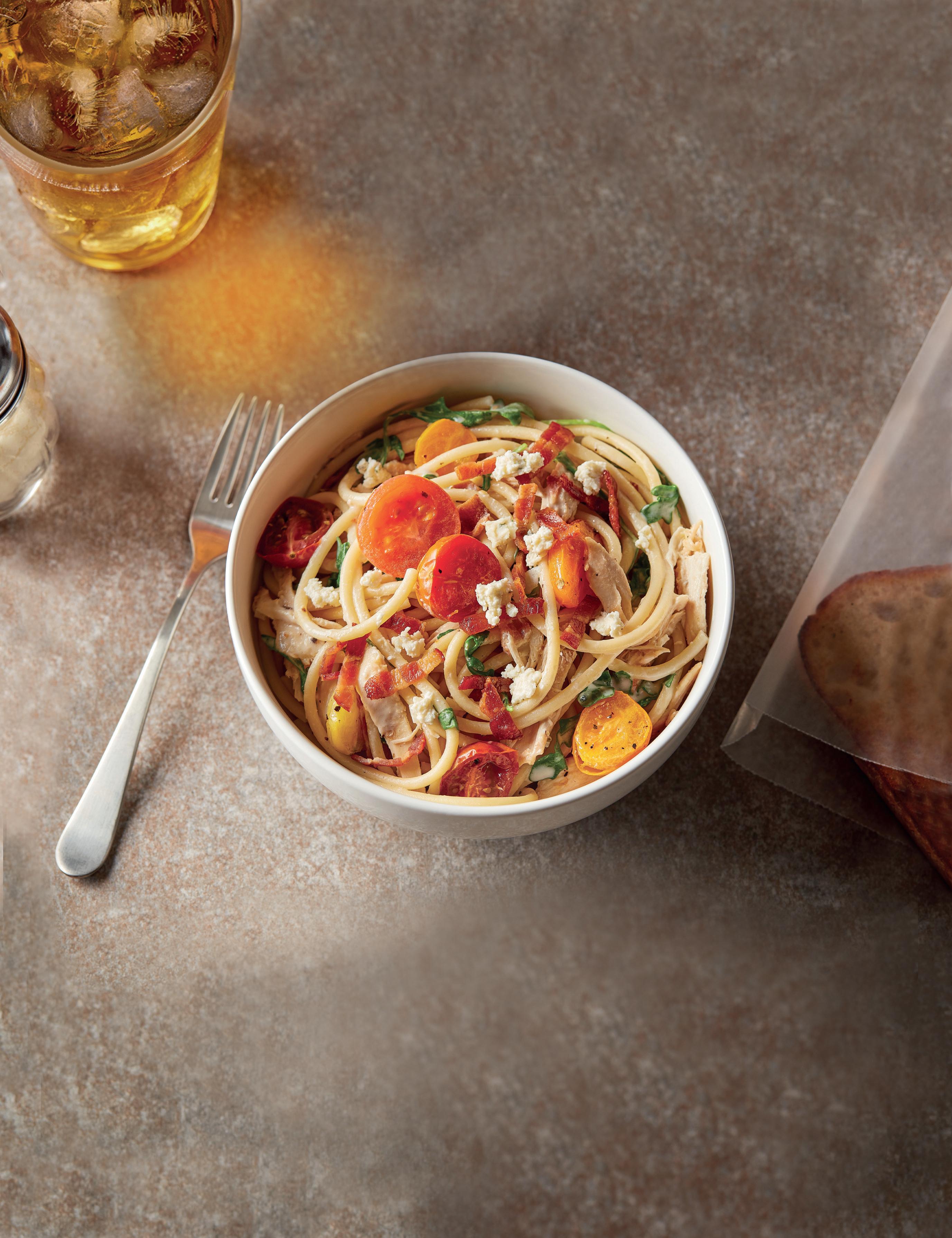








BOURSIN CHEESE has long been known among chefs as the perfect comfort ingredient—one that can be used in a seemingly endless array of recipes and applications. More recently, Boursin is enjoying expanded popularity as a “darling” on TikTok, the trend-setting social media platform.
In fact, year-to-date through May, Boursin has been featured in 112 million TikTok videos, based on tracking of “#Boursin.” TikTok confirms this makes Boursin one of the most active hashtags in the food and beverage brand space. Thanks to TikTok, a whole new generation is falling in love with Boursin.
TikTok users are featuring Boursin in a variety of ways, from breaded and baked with hot honey to blended into soup, baked with hasselback potatoes, and more. There was a very simple pasta recipe leveraging Boursin that went especially viral. And because Boursin is sold all over the world, many of the Boursin-inspired recipe videos come from other countries, offering global influence and flavor.
Chef Ian Ramirez, culinary consultant and owner of Mad Honey Creative Studio, says he is one the increasing number of chefs who check out TikTok regularly to learn more about food trends. He started seeing Boursin-inspired recipes on TikTok somewhere in the past year and says he was hardly surprised.
“TikTok—or ‘FoodTok’ as I’ve seen
it called—is about simple, delicious recipes that can be made with just a few ingredients,” Ramirez says. “I think that’s where Boursin really shines: It’s already a shortcut in and of itself. You’ve got the herbs and garlic in there, and it’s packed with a ton of flavor.”
In other words, a lot of people found out via TikTok what many chefs already knew. For chefs in foodservice, the question becomes: How can they capitalize on the TikTok trend?
For one, Ramirez says, while Boursin has always been an iconic ingredient, it’s possible that it has never been more popular than it is now. Chefs can not only capitalize on the cheese’s ease-of-use, versatility, and distinct, rich flavor, but now they can call out the ingredient on menus to drive traffic.
“Boursin is a staple in every kitchen I’ve ever worked in,” Ramirez says. “It’s like it was a secret weapon in the kitchen because you can put it in almost anything to elevate it. Now, a lot of diners know about it and love it. That’s kind of a gamechanger.”
Chefs may even consider incor-
porating the Boursin TikTok recipes onto their menus—but they better get it right, Ramirez cautions, and use the right ingredients.
“I always try to remind restaurants that some of the very best menu items are things that are delightfully simple,” Ramirez says. “But if you’re going to go simple, you have to use good, solid, proven ingredients. So if you’re going to make that TikTok recipe, you better use the best quality ingredients. You better not skimp out on the Boursin—it’s all about figuring out how to make the dish with minimal prep and make sure it’s still done with love.” ❖
For more Boursin recipes, visit belbrandsfoodservice.com.

How chefs can capitalize on the iconic ingredient’s social media boost.
BY CHARLIE POGACAR
“FoodTok… is about simple, delicious recipes that can be made with just a few ingredients.”
DINERS ARE CUTTING BACK on spending. That’s led to fewer restaurant sales and less foot traffic. Black Box Intelligence reported that yearover-year traffic growth slowed by 3 percent in April 2023.

In some ways, this is a familiar challenge for chefs, who often gravitate toward the profession because they enjoy creating something notable and delicious that will get diners through the door. Innovation continues to be at the heart of what they do; it just comes with a new set of considerations.
“With menu development, the attrition of talent is a very real obstacle,” says Jennifer OBrien, director of restaurants and bars at Marriott Luxury brands. “Innovation comes by the way of: ‘How do we upscale people more fluently and quickly without losing quality and innovation on the menu?’”
Nate Weir, vice president of Modern Restaurant Concepts, agrees that staffing remains the biggest ongoing challenge when designing new menu items. He says that’s one of the many reasons that chefs are rethinking ingredient selection—and how each ingredient fits into their operation.
“You can get around the shortage of kitchen staff by simplifying processes and finding layup ingredients that work really well without a lot of manual input,” Weir says. “Versatile ingredients that work in multiple places and give us more velocity in
the kitchen are a really key piece to consider when innovating right now.”
This is where spreadable cheeses come into play. They are ingredients that can be used across a wide variety of dishes and dayparts. Products like Boursin, Price*s Pimiento Cheese Spread, and Merkts Cheese Spread are helping chefs unlock creative recipes that will drive foot traffic because they can go far beyond just spredable applications like sandwiches and burgers.
“Versatility is the perfect word for spreadable cheeses,” Weir says. “They are incredibly flavorful ingredients that are versatile by their very nature: They can be stirred into a recipe, spread easily, or even be a standalone ingredient on a cheese board.”
Weir points to Price*s Pimiento Cheese Spread as an example of the above: It can be spread on bread, stirred into grits, put on a burger, or folded into mac ‘n cheese. Pimiento also happens to be a hallmark of Southern cuisine, which has become trendy all across the country in the past decade.
“I feel like especially in the spring, around the time of the Masters [golf] tournament, you start seeing a lot of Pimiento,” Weir says. “But Southern food has had a big moment and we’re seeing that continue with Southern influence all over menus. Pimiento can be a great component in capturing that trend.”
A chef favorite, Boursin is another study in versatility—to exhibit this, Weir cites ways he has used Bour-
sin products in the past: in mashed potatoes, on a salad, folding it into sauces or soups, on top of a burger, or in a gnocchi. Weir also recommends the Boursin IQF Frozen Cheese Cubes as a way to get perfectly portioned cheese onto a pizza bursting with flavor—the product was created by Bel Brands USA in the company’s ongoing quest to give chefs solutions-oriented foodservice formats of its time-tested lineup of products.
In a further nod to those IQF cubes—as well as to Boursin’s daypart versatility—OBrien recently designed a breakfast pizza with strawberry preserves and Boursin IQF Cheese Cubes, arugula, and pistachios. “It’s a really simple dish and one you could do with fresh strawberries to upscale it,” OBrien says. “The sweet and savory elements paired together really nicely. The creaminess of the Boursin almost has that goat-cheese-like consistency—it maintains its creaminess despite the heat.”
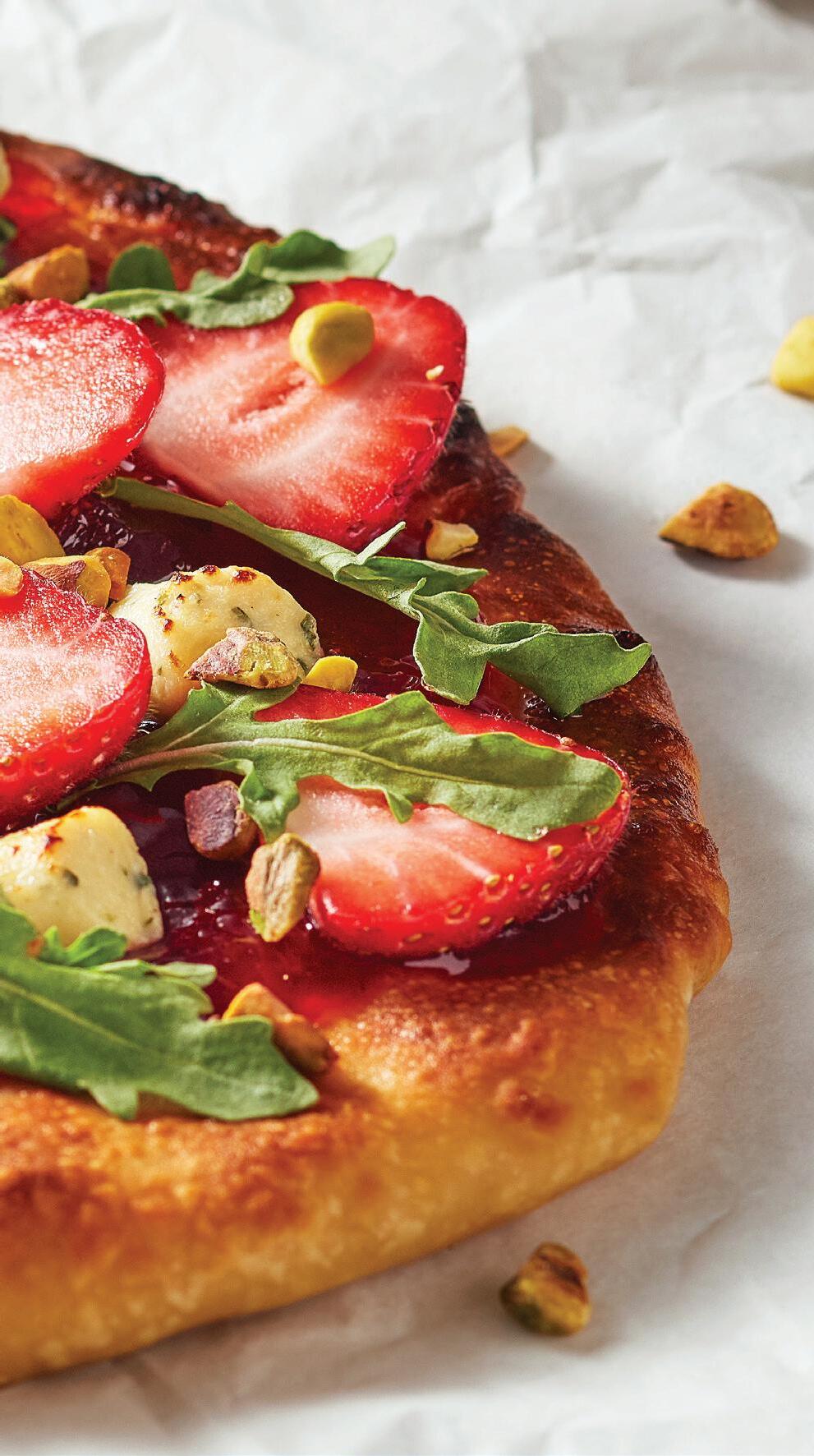
Each spreadable cheese has the
potential to spark fusion-style innovation, too, Weir says, adding that each works well with Latin American flavors in particular. For example, he recently created a Chili Relleno Philly Cheesesteak with Price*s Pimiento and roasted mushrooms.
“You can use all of these products in Mexican fusion dishes in ways that might be somewhat unexpected,” Weir says. “Both Merkts and Price*s can be a great base for a queso. And aside from those Mexican flavors, Boursin can be a great substitute for feta in something like a Kebab—it can elevate the flavor profile of a Mediterranean dish and really add that flavor punch.”
One final trend that the Bel Brands USA lineup has covered is the increasing appetite for plant-based cheeses, which Datassential says have grown 110 percent on menus in the past four years. In fact, Bel Brands now offers Boursin Dairy-Free Garlic & Herbs among its vegan options. OBrien was introduced to the product when it first came to market and was immediately impressed.
“The flavor of Boursin Dairy-Free is outstanding,” OBrien says. “The consistency is also super creamy. It behaves as though it is a dairy product.”
In this way, it is the perfect extension of the Bel Brands USA portfolio: Craveable, versatile, and comforting, it can be used in any number of applications in order to drive foot traffic. Each Bel Brands USA product is packed with flavor and perfect for kitchens looking for easy-to-use ingredients that streamline back-ofhouse operations.
“Spreadable cheeses like the Bel Brands lineup is a nostalgic food group, if you will,” OBrien says. “Because that’s what it is—they’ve created almost their own food group. The flavors of each product are craveable and flexible, so there’s a lot of exploration you can do.” ❖
For more flavor with less labor, visit BelBrandsFoodservice.com.

“Versatility is the perfect word for spreadable cheeses.”









































Featured items show off the versatility of fan-favorite spreadable cheeses.
INFLATION AND LABOR ISSUES have necessitated SKU rationalization across the industry. In order to stay innovative despite those headwinds, chefs have had to find versatile, hard-working ingredients.
Nothing exemplifies the versatility of Bel Brands’ spreadable cheeses— including Boursin, Merkts, and Price*s Pimiento— like seeing the way chefs are using the products on their menus. Here are a few examples.
BOURSIN
RESTAURANT: L’Original Petit Trois
FEATURING: Boursin Cracked Black Pepper Cheese
“IN FRANCE, everybody buys Boursin Cheese,” says Chef Ludo Lefebvre, owner and founder of L’Original Petit Trois. “Do you know why? Because it’s so good. When I created this omelet

PIMIENTO CHEESE is now on 3.4 percent of all menus. Past-year growth in penetration is +4 percent, and pimiento is projected to grow +17 percent through 2027. Pimiento cheese continues to be primarily a Southern item (penetration in the South is 6 percent), but the popularity of Southern cuisine should drive awareness and use of pimiento cheese into other regions. 7.3 percent of sandwich restaurants currently menu pimiento cheese, suggesting there is interesting potential as innovation in sandwiches outpaces burgers and other handheld categories. While 72 percent of consumers are aware of pimiento cheese, only 44 percent have tried it— indicating significant potential for market growth with increased trial.

I wanted to use a French cheese. I wanted something approachable and I wanted something firmer than gruyere, so I chose Boursin. I love the way the cheese melts in the omelet and gives it a great texture.”
Lefebvre gleefully rips off a list of other applications he can picture using Boursin in: “You can put it on a salad, eat it for lunch with a snack, or add a touch of Boursin to your mashed potatoes. It’s fantastic in a creamy sauce on a steak, or in mac and cheese—when you start thinking about it, there’s really a lot of things you can do with Boursin.”

RESTAURANT: 1776 by David Burke
FEATURING: Boursin Garlic & Fine Herbs Cheese
CARMINE DI GIOVANNI, managing partner at David Burke Hospitality Management, uses Boursin to amplify his Beer Battered Cheese Curds at 1776 by David Burke. Boursin has also appeared in menu items across the David Burke Hospitality Management footprint in applications like gnocchi, stuffed jalapenos, and omelets.
“For a chef that’s short staffed or working with young chefs and cooks
POGREBA RESTAURANT in Lacrosse, Wisconsin, uses Boursin in a Mozzarella Fondue (mozzarella cheese topped with Garlic and Herb Boursin crumbles and served with beef tips, mushrooms, asparagus, pork belly, and tomato focaccia for $18), as well as a house special: Boursin Shrimp & Zucchini Roll Ups (shrimp, Garlic and Herb Boursin cheese, peppers, onions, carrots, cucumbers, and radishes wrapped in zucchini. Served with Basil Pesto Ranch).
THE TAP HOUSE, a bar and grill concept across the Chicago suburbs, uses Merkts on a whopping six menu items. It’s used in a Guinness-Merkts dipping sauce for Soft Pretzel Bites and as a topping on four different burgers— the Tap House Burger, the AllAmerican Double Double Cheese Cheeseburger, the Tipsy Stout Burger, and the Kobe Beef Burger. Finally, the concept uses Merkts on its Double Decker, Crispy BeerBattered Chicken Melt which the concept hails as a staff favorite.
RESTAURANT: BoomerJack’s Grill (Dallas-Fort Worth area)

FEATURING: Price*s Original Sweet & Tangy Pimiento Cheese Spread
coming up, Boursin is a product that doesn’t have to be manipulated at all,” di Giovanni says. “In current times, it’s a great product because of that. Products like Boursin open up your wheelhouse to be able to make something great.”
BOOMERJACK’S GRILL, a concept in the Dallas-Fort Worth area, had to elevate its LTO, The Wagyu, to the main menu due to popular demand. The burger was designed by Grant Morgan, concept chef at BoomerJack’s, and features a Wagyu patty, black pepper mayo, lettuce, tomato, pickles, and Price*s Original Sweet & Tangy Pimiento Cheese Spread.
When initially building the menu item, Morgan had a set of considerations that are increasingly factored into every chef’s calculus. “You want to be innovative without overcomplicating things,” Morgan says. “That requires products that are reliably priced, readily available, and won’t make food costs skyrocket.” ❖
Q&A: R&D expert discusses innovating in the face of headwinds.
PANTRIES HAVE SHRUNK, but consumers expect exciting dishes when they go out to eat: This is the paradox chefs live with every day. Inflation requires careful considerations in the research and development phase that were not as necessary prior to the pandemic.
FSR sat down with an innovation expert, Jack Baer, product development manager OOH with Bel Brands USA, to discover some of the ways that chefs are tackling ongoing challenges in order to remain innovative.
BAER: “One of the things that makes this industry so special is that chefs almost seem to be at their best when things are stacked against them. Right now, the challenging part is: ‘How do we innovate with what we have or by just adding one or two SKUs?’ Once a chef has that part figured out, they can rely on a solid base to go multiple directions.
“Obviously, this requires versatile ingredients. For example, Boursin Garlic and Fine Herbs—it’s something you can use in a sauce, a pasta, on top of a burger. You can spread it on bread, on sandwiches, or put it in grits. It’s ingredients like that that open up this world of innovation.
Are there other versatile Bel Brands SKUs that unlock innovation?
BAER: “Merkts Cheese Spread is another great example of this. It is amazing on a smashburger, or any type of burger. But you can also whip it up, aerate it, squeeze it out, and use it as part of a queso dip.
“Price*s Pimiento is no different: you can use it on a sandwich on the lunch or dinner menu, or put it on an egg-and-cheese biscuit on the breakfast menu. All of these spreadable ingredients work across different dayparts and menus and help chefs innovate and become more profitable.”
BAER: “Plant-based items are such a big thing right now. That’s not just true of cheese, but the industry as a whole is being pushed toward more sustainable, plant-based products. Boursin Dairy-Free has found a lot of success for this reason.

“Chefs really like the fact that Boursin Dairy Free has that great taste and mouthfeel, and it also has a lot of the same versatility that you find with other cheeses from Bel Brands USA. It’s a great way to appeal to all different types of diners—not just those looking for dairy-free options—and again, you can find a lot of innovative uses with it.”
BAER: “We have a lot of fun as a company. We’re bringing in the right people and there’s really no limit to what we can accomplish here. I think chefs feel that—we don’t take ourselves too seriously, but we take the industry very seriously and we’re here to be resources to restaurant operators who are looking for the best ways to tackle menu development despite ongoing challenges.” ❖
For more information, visit belbrandsfoodservice.com.
